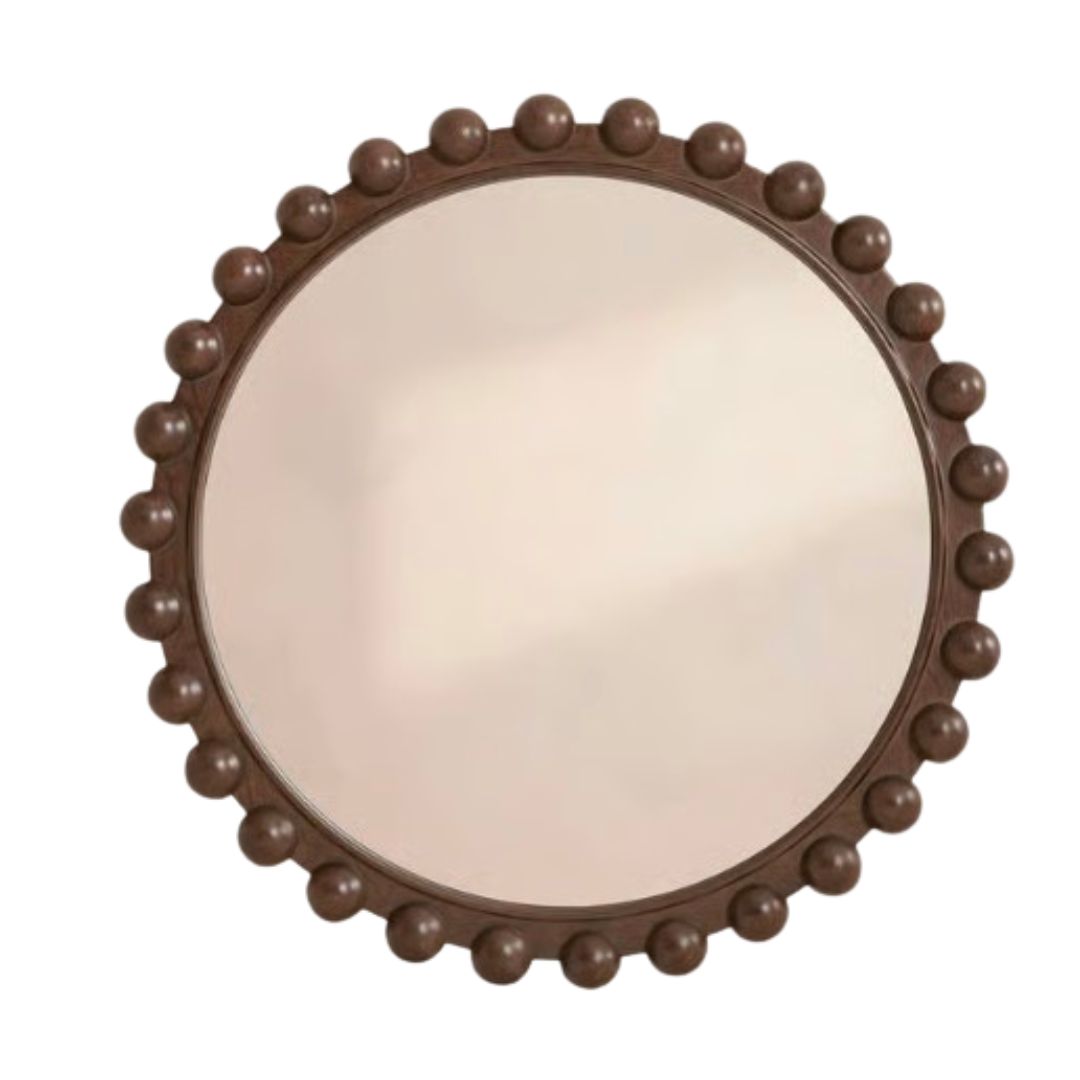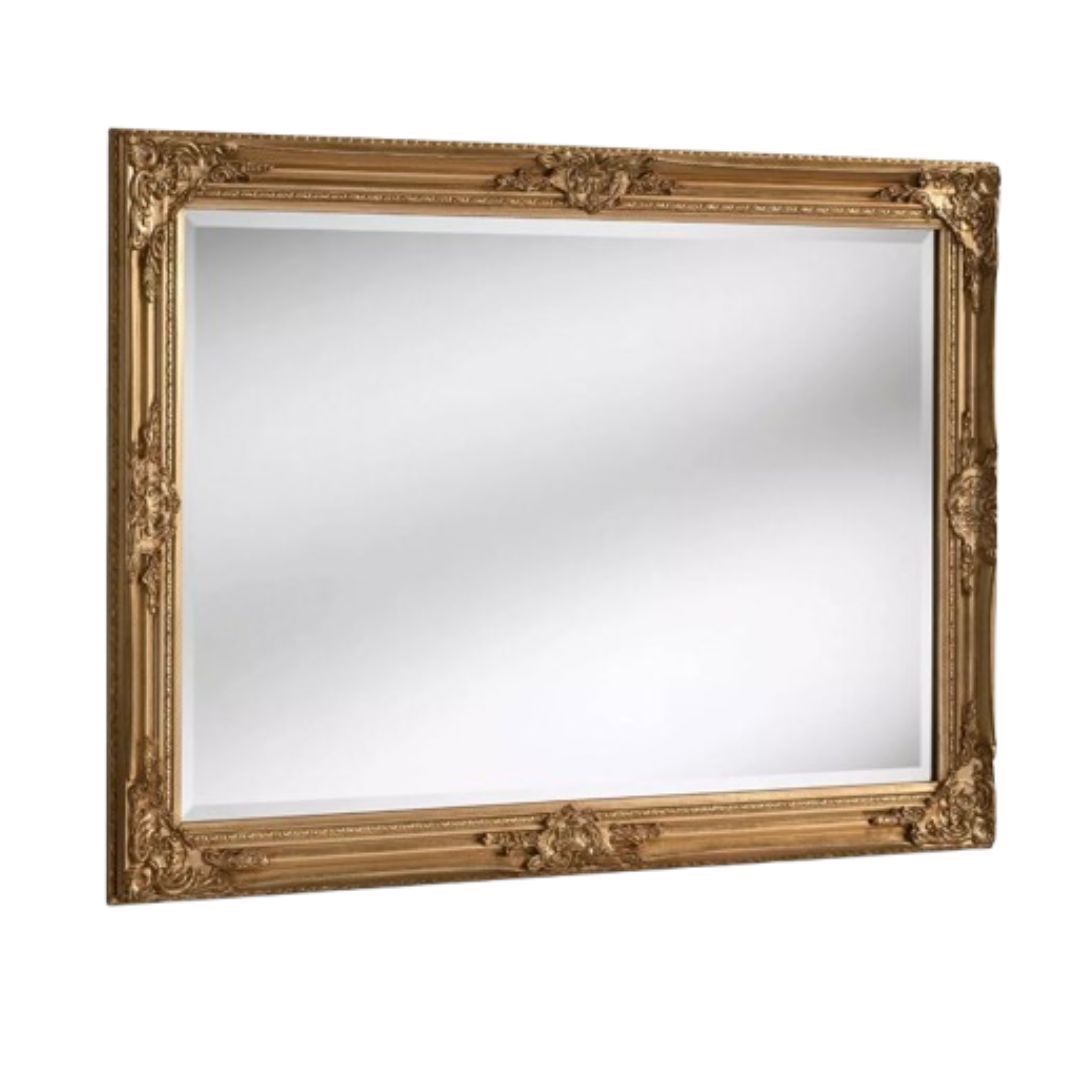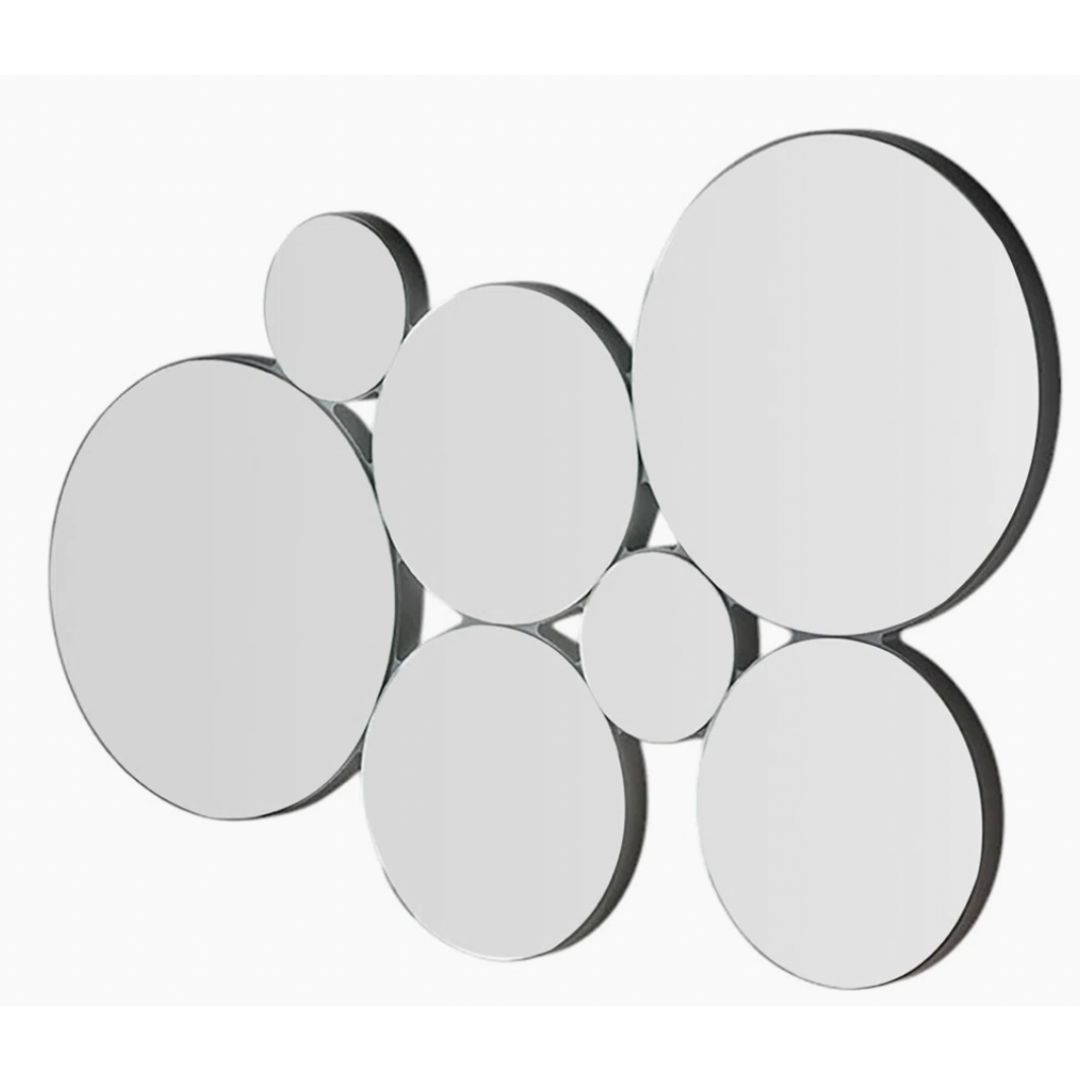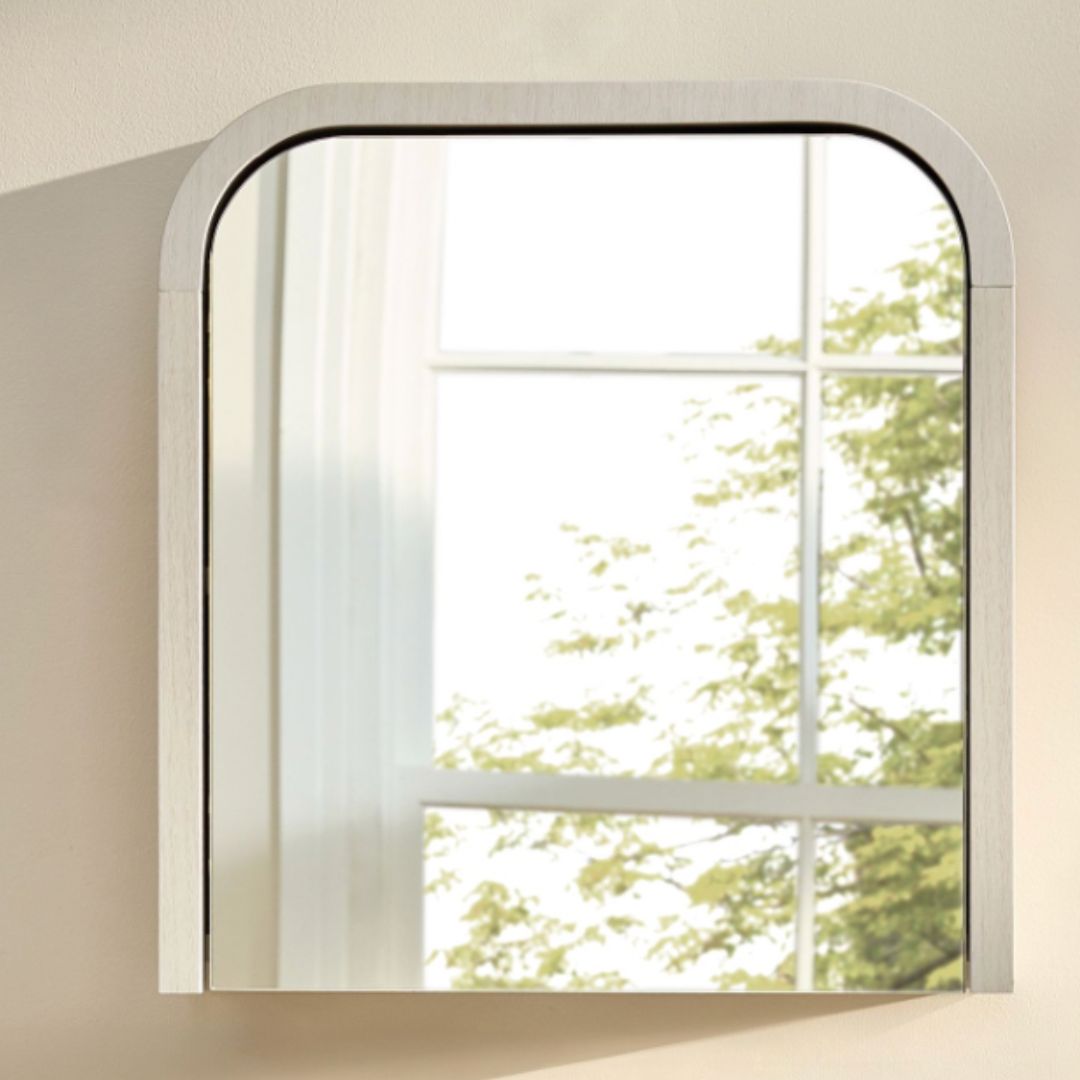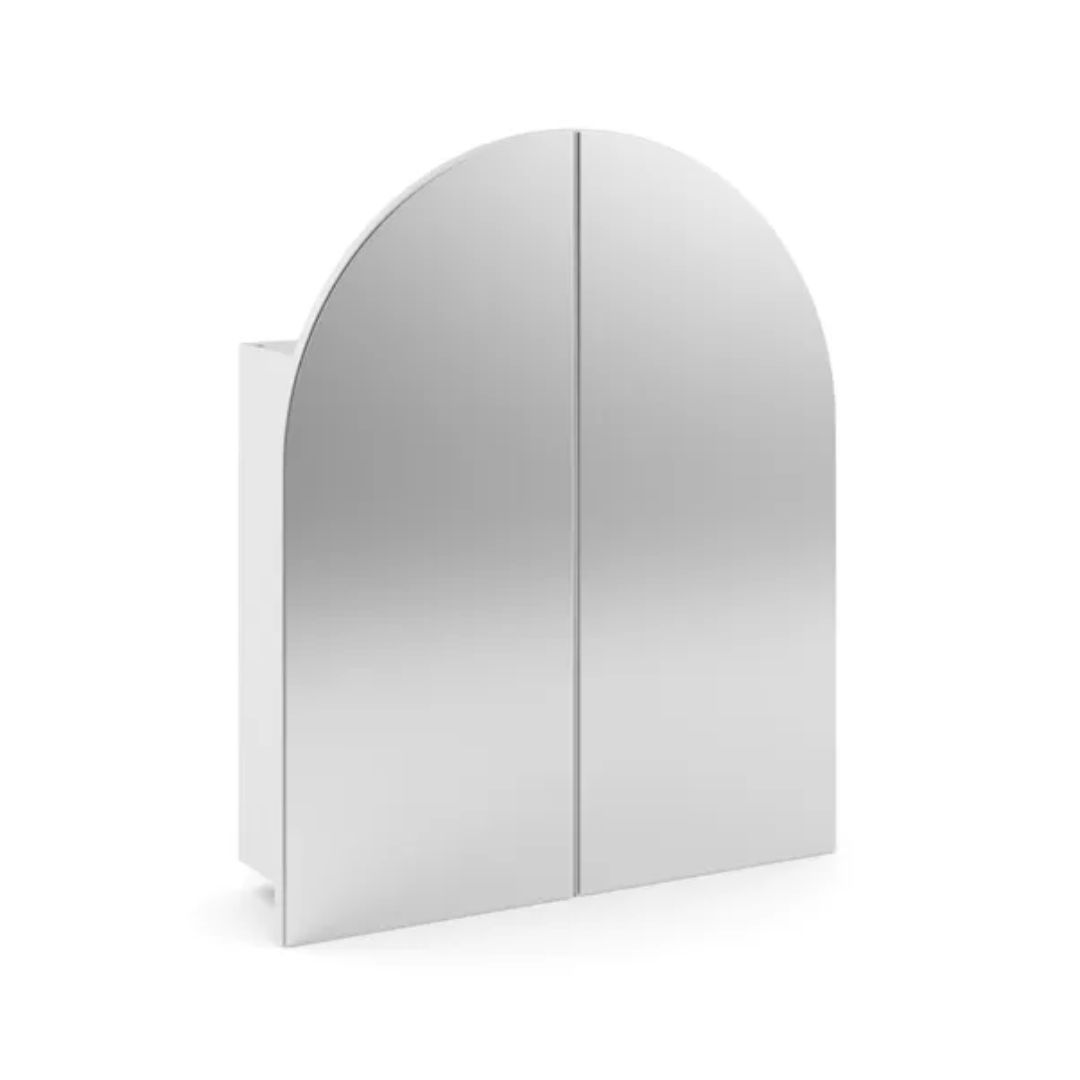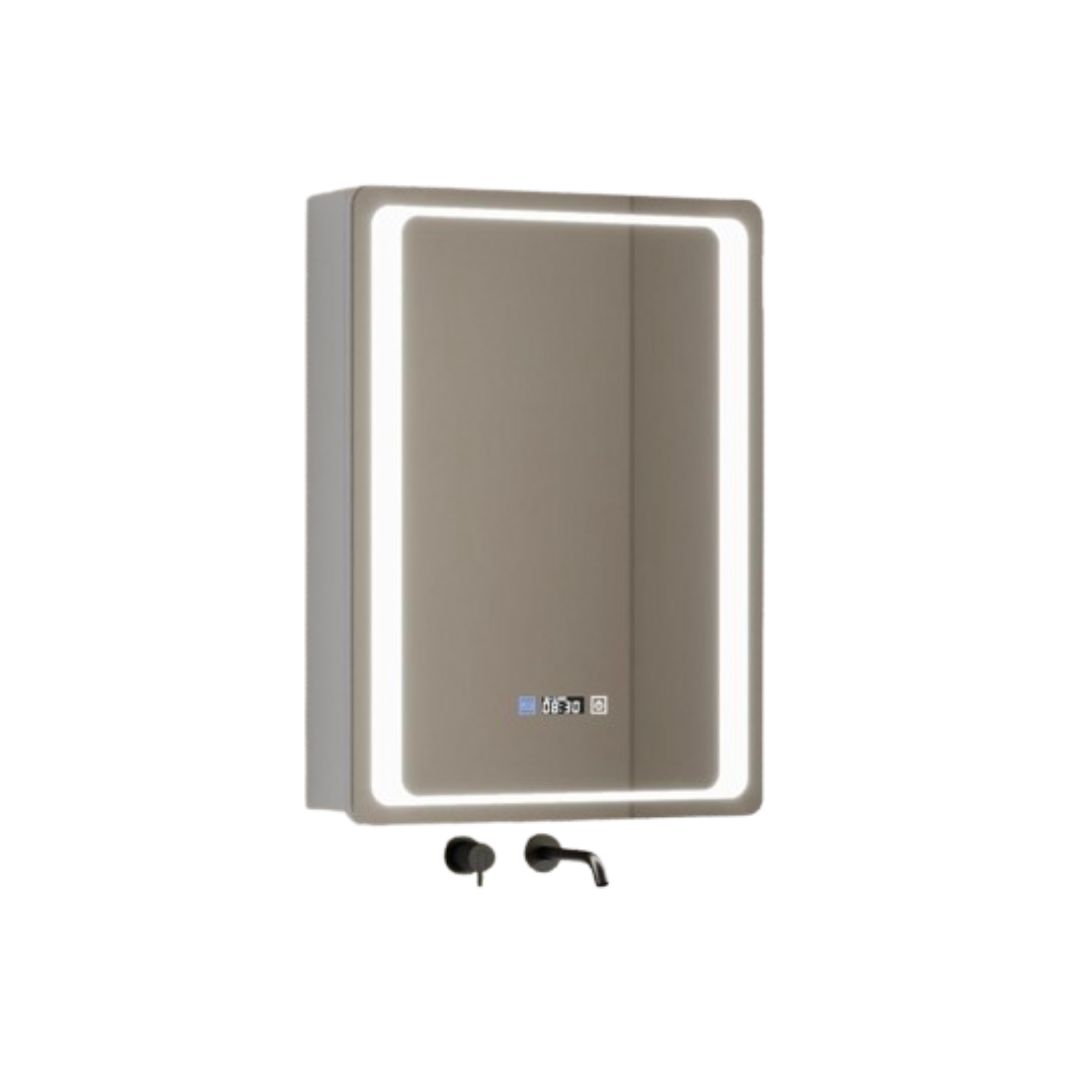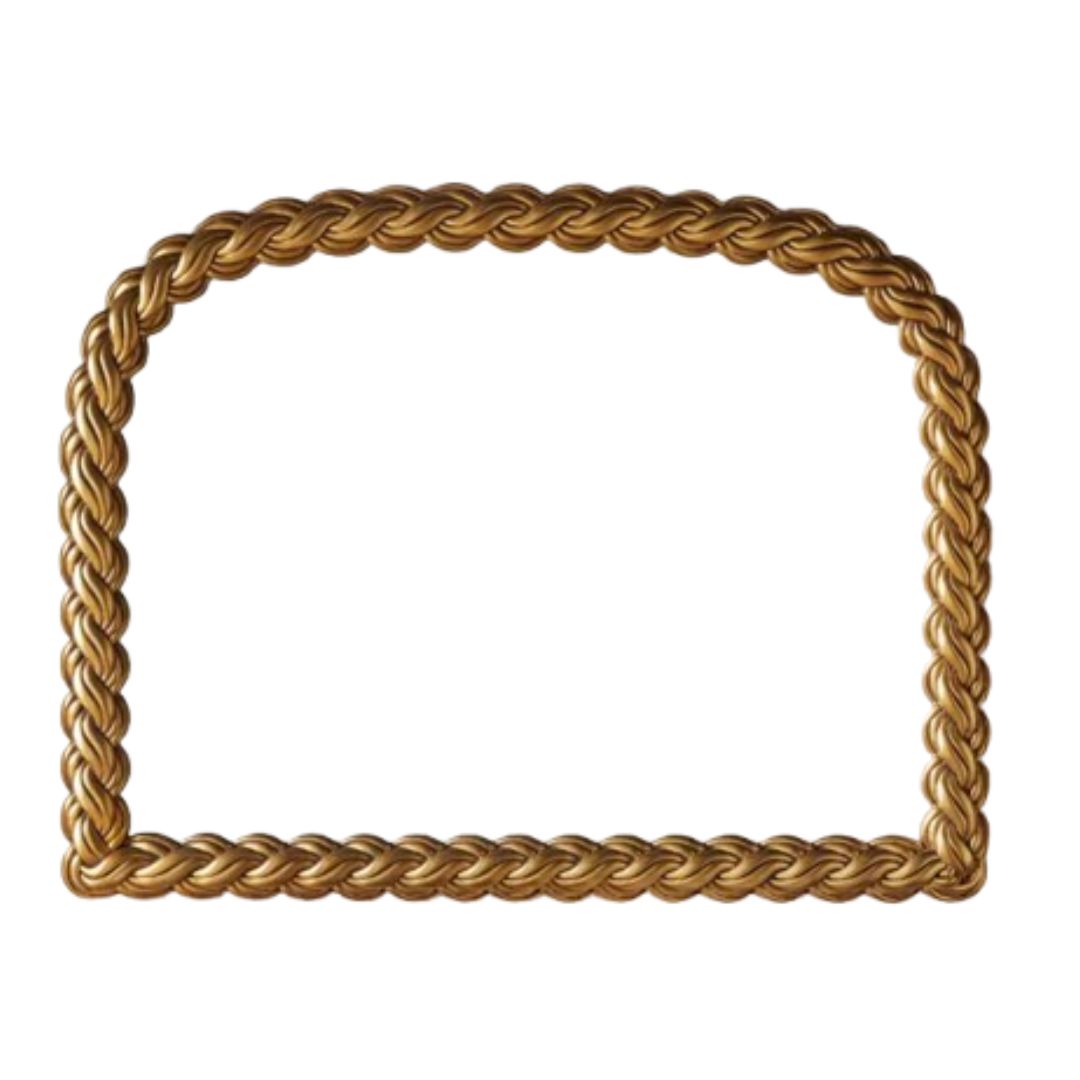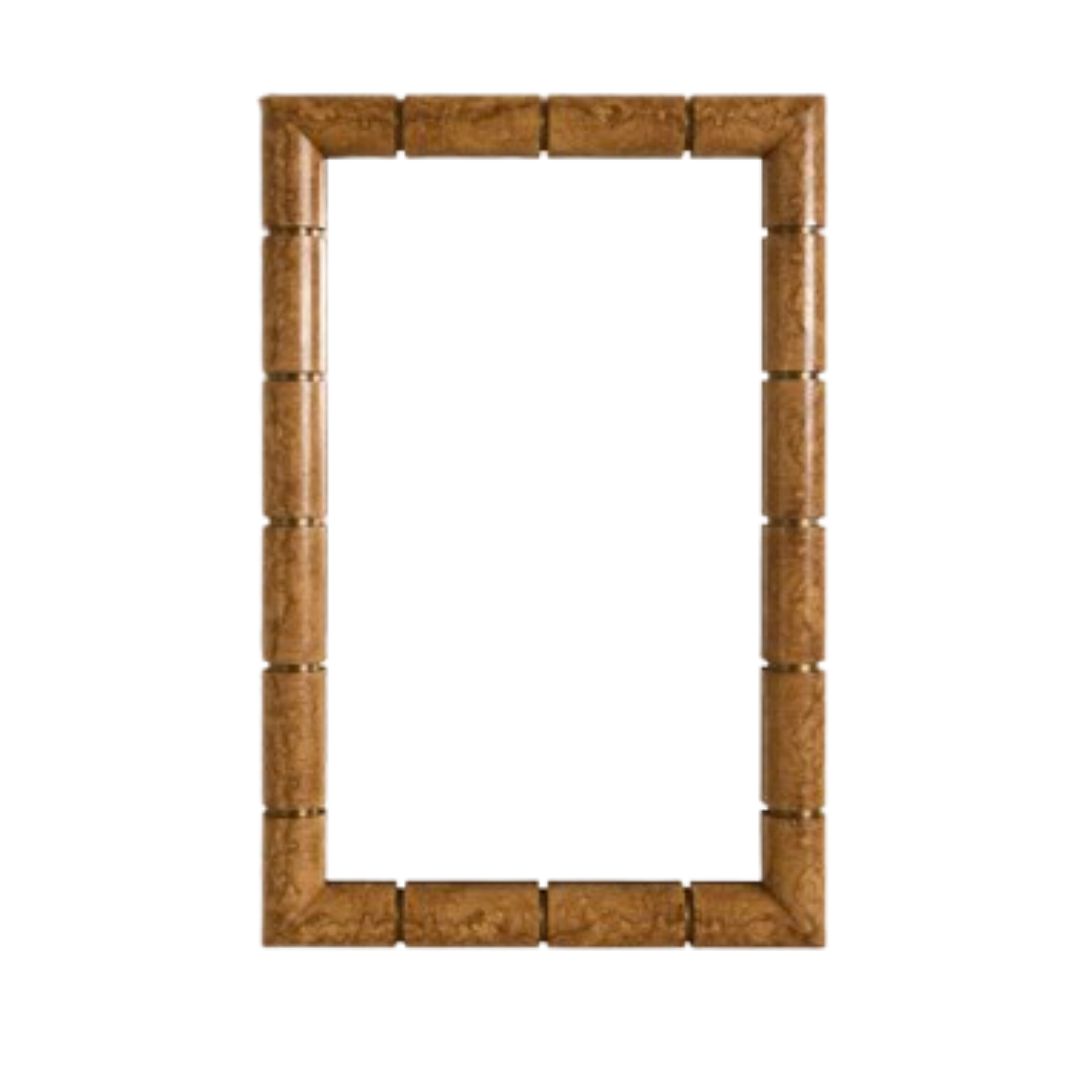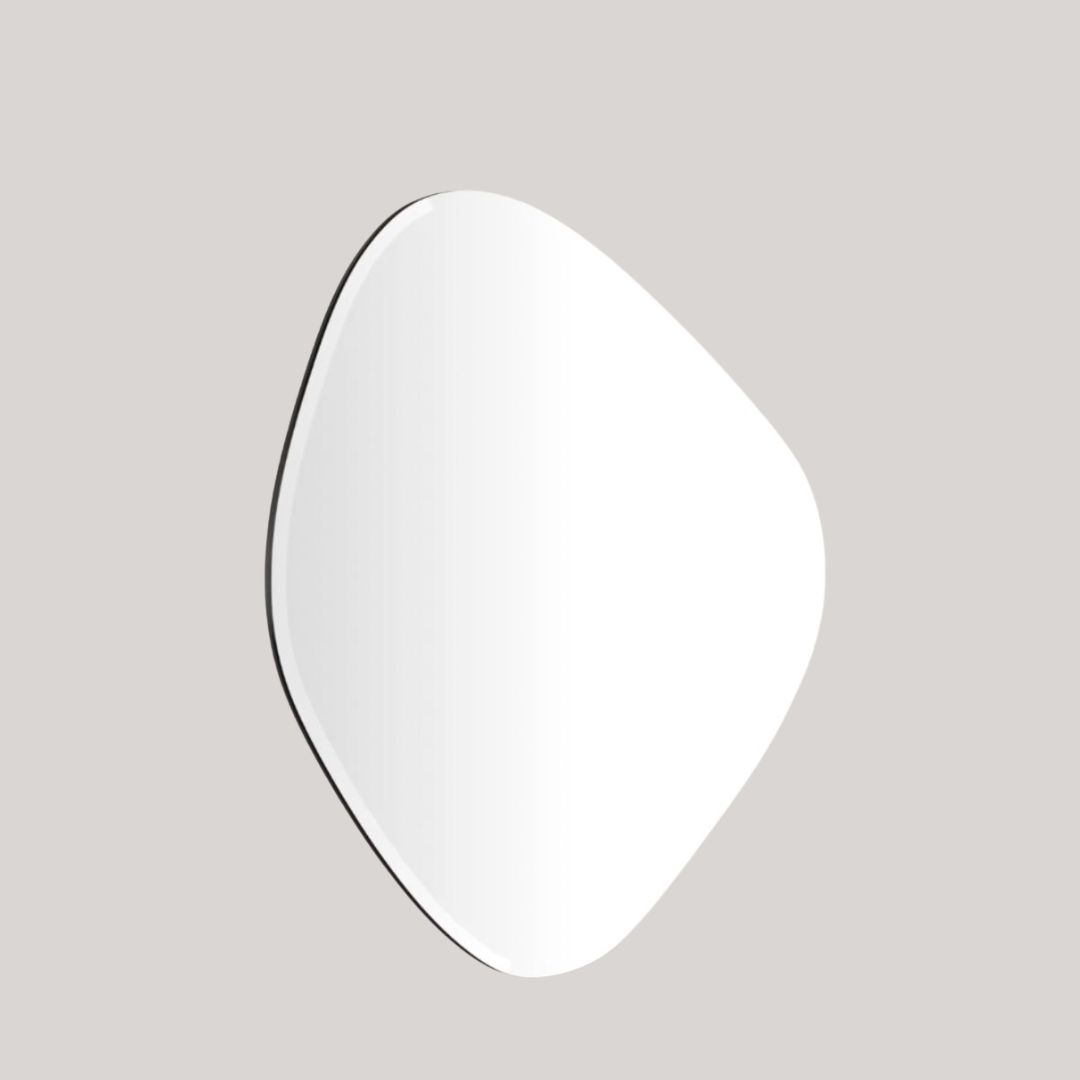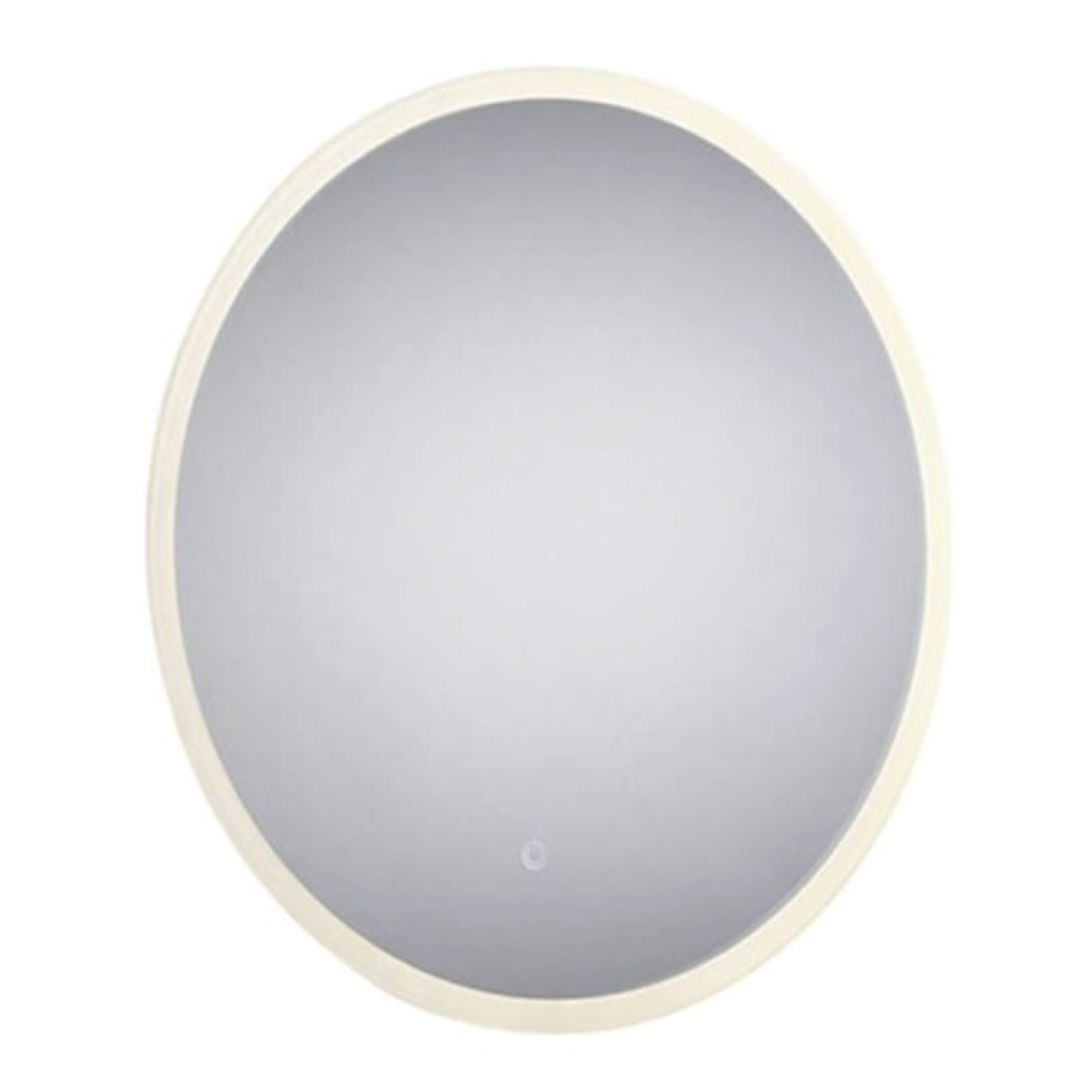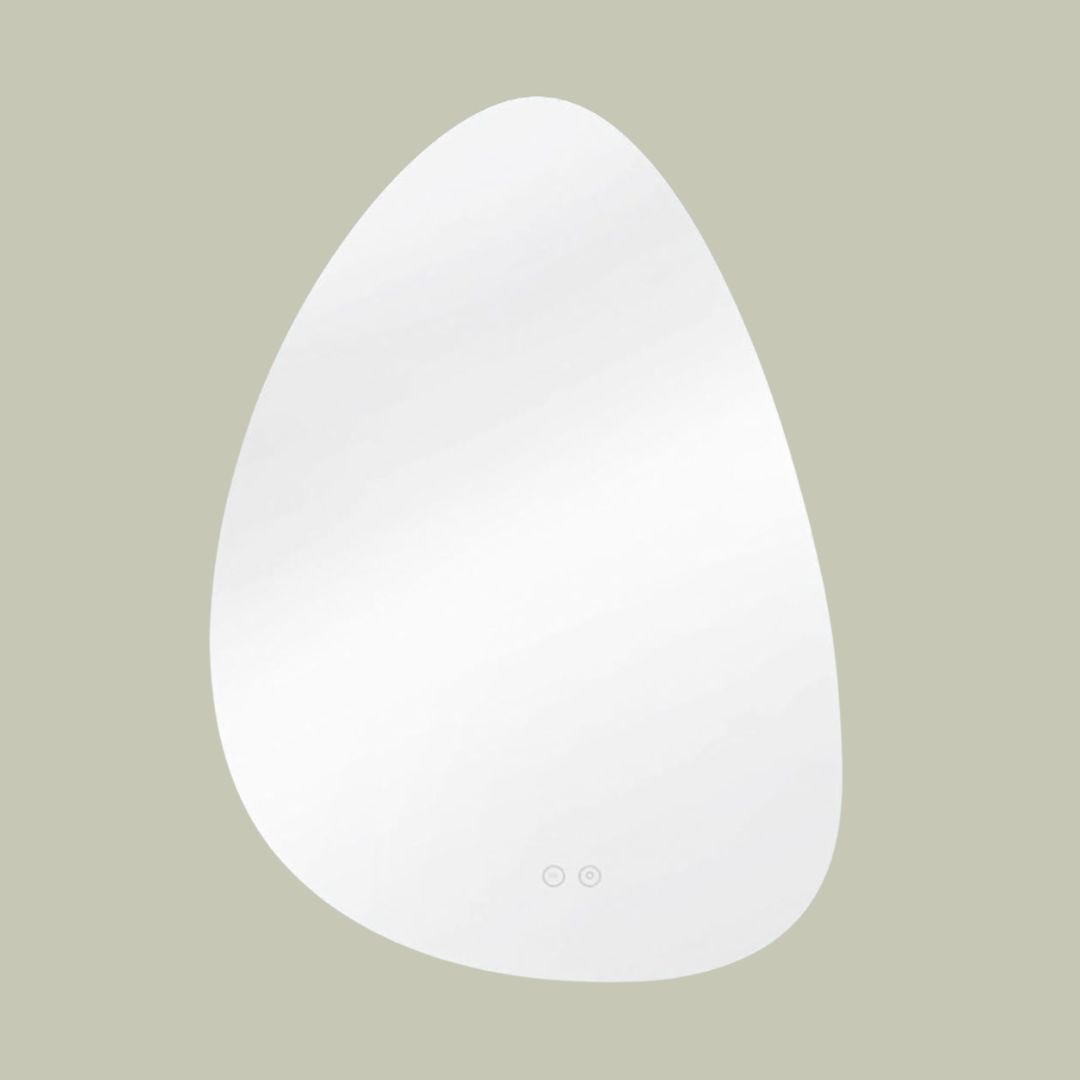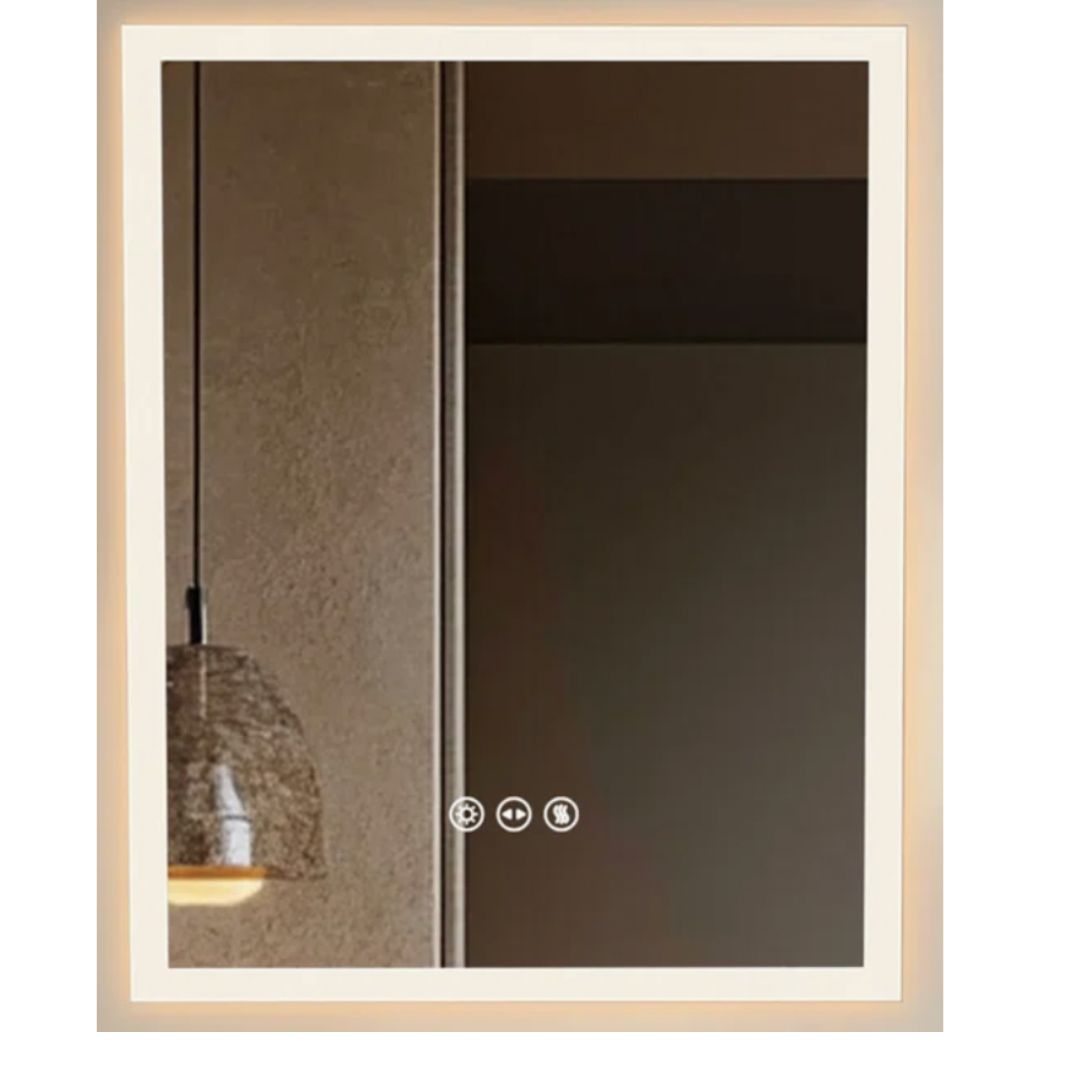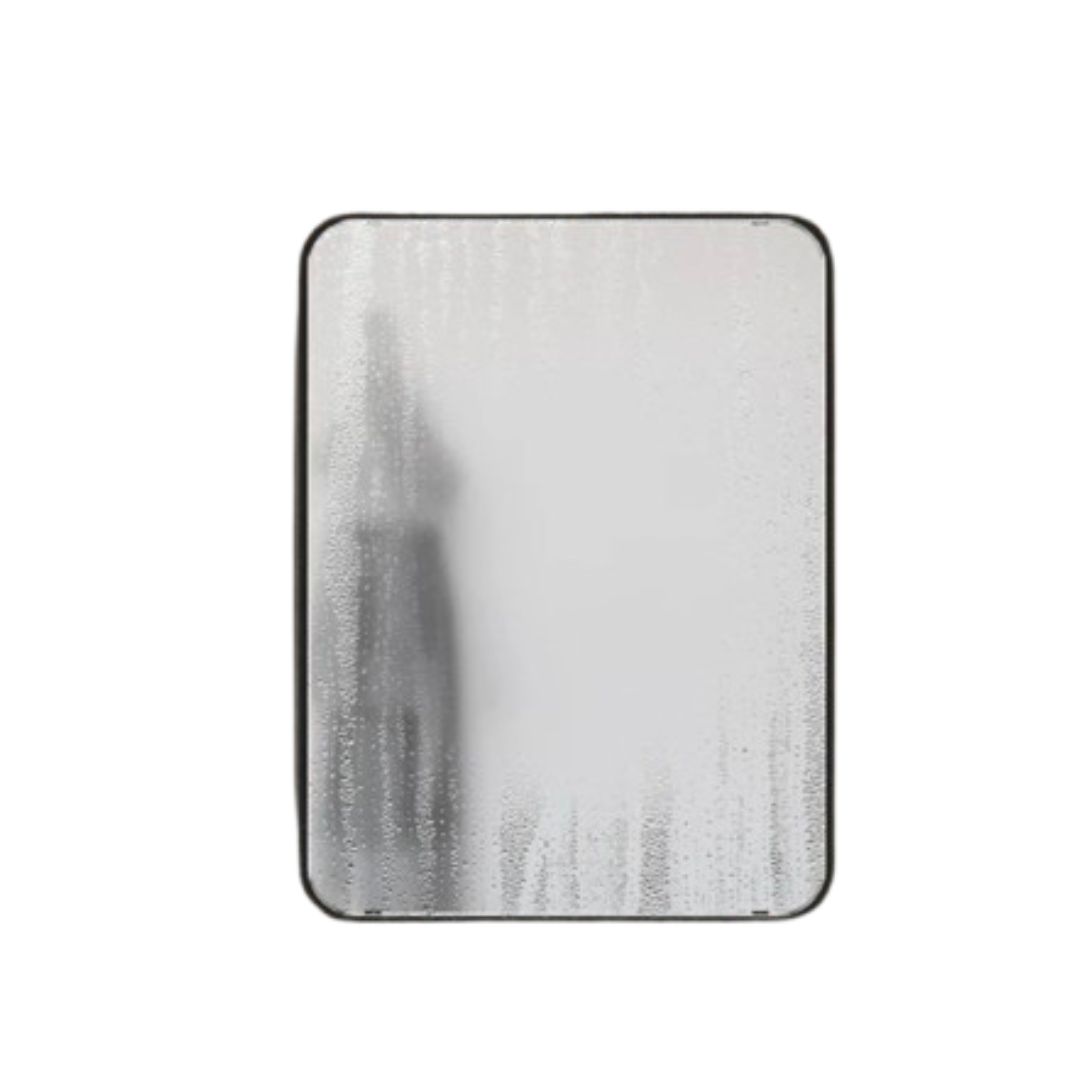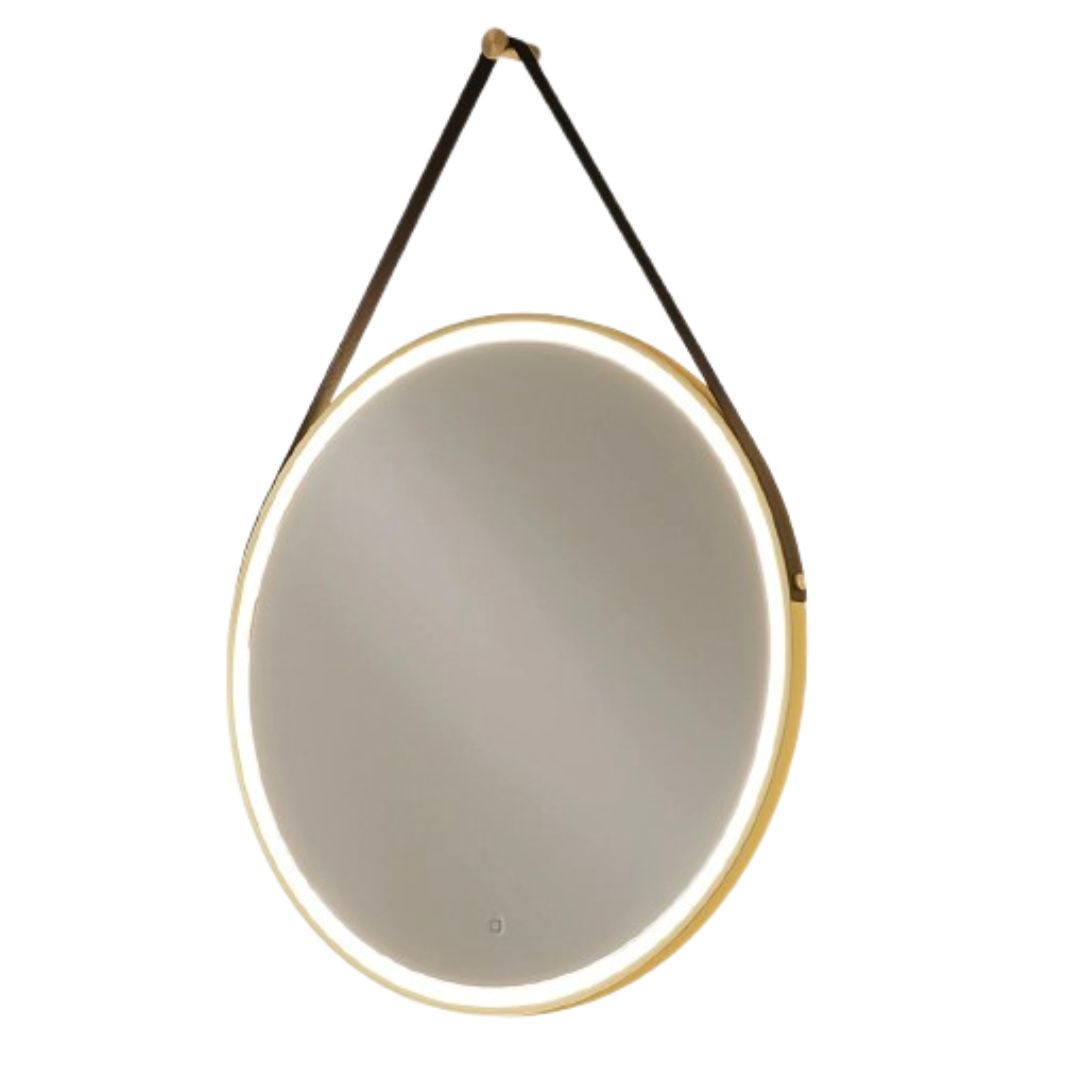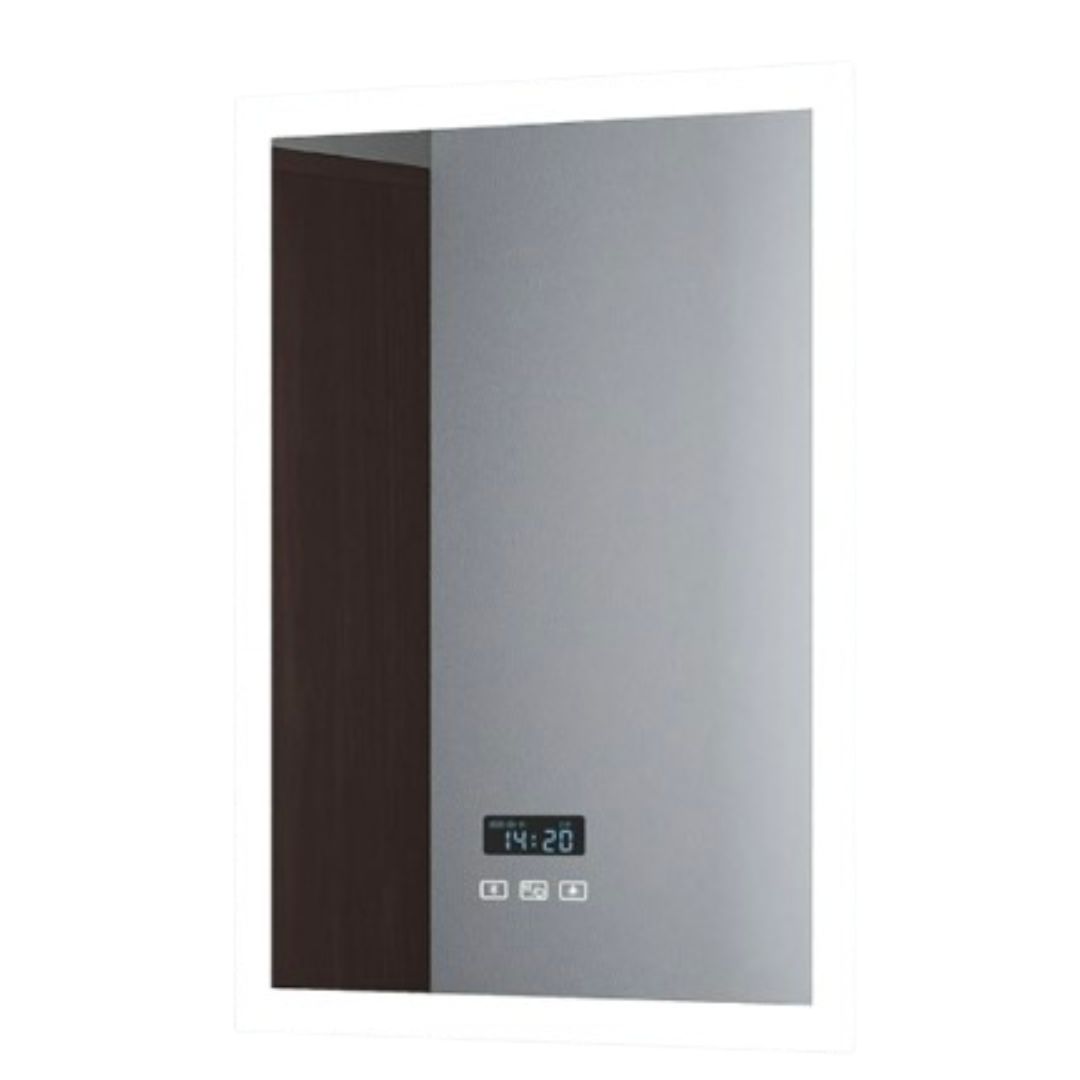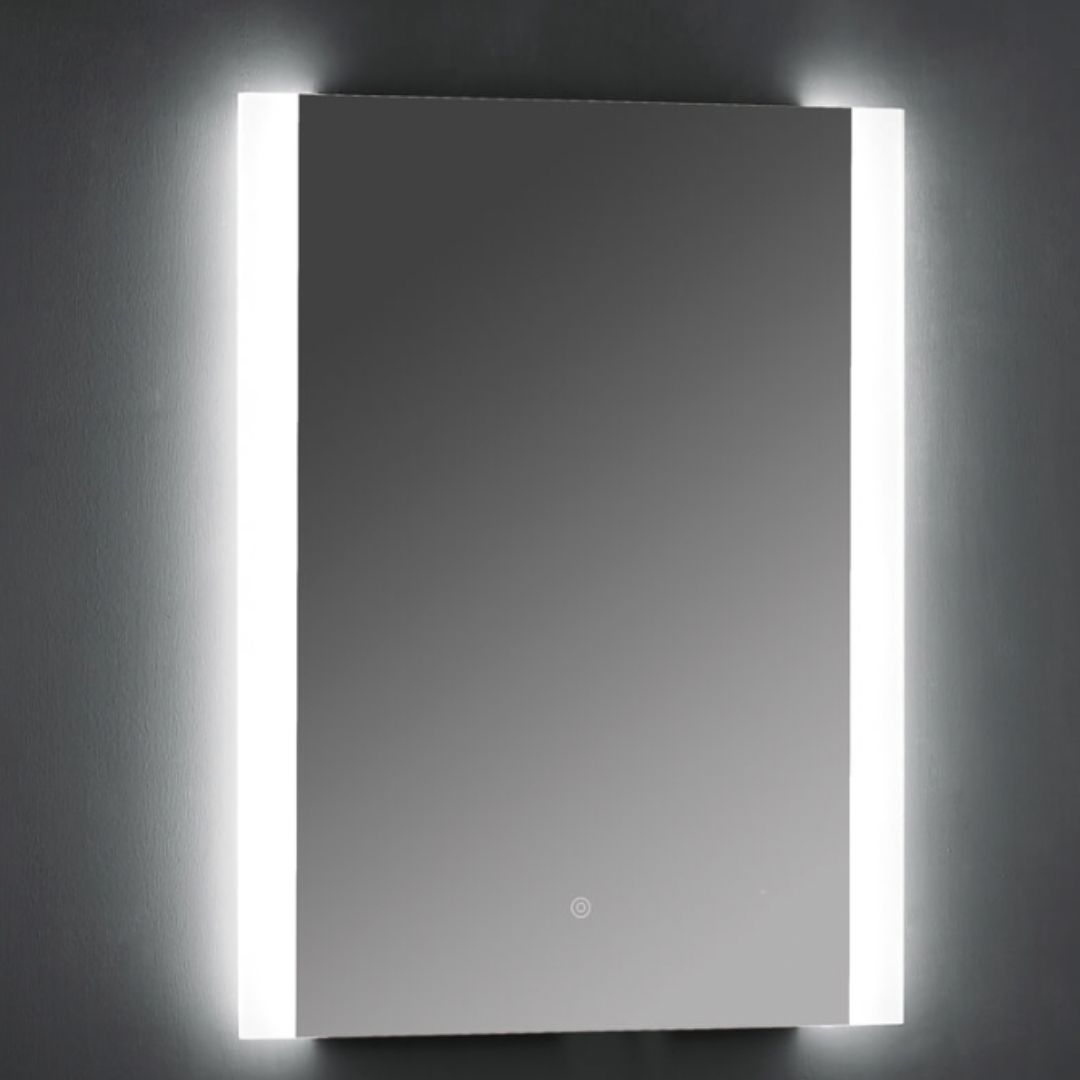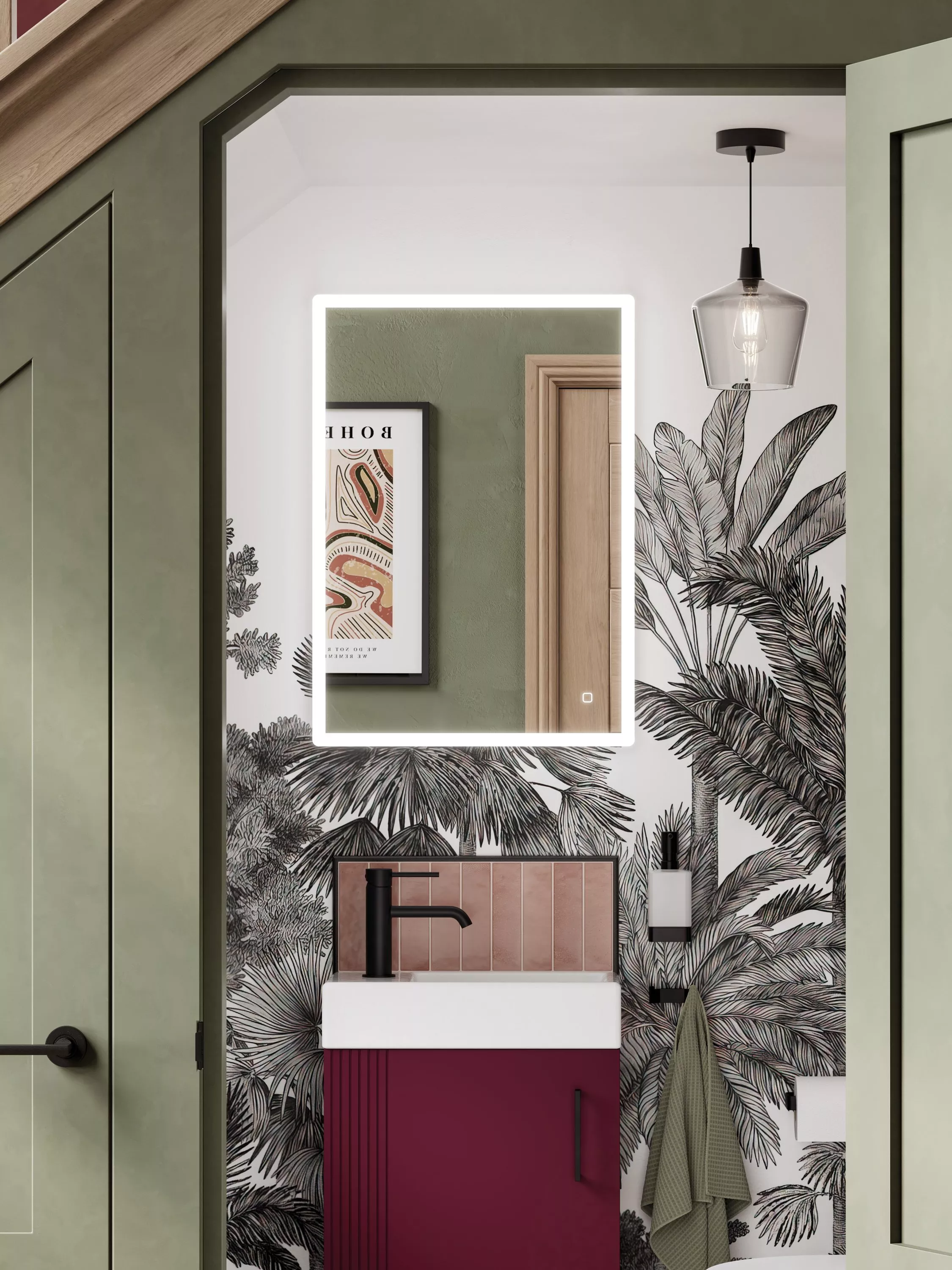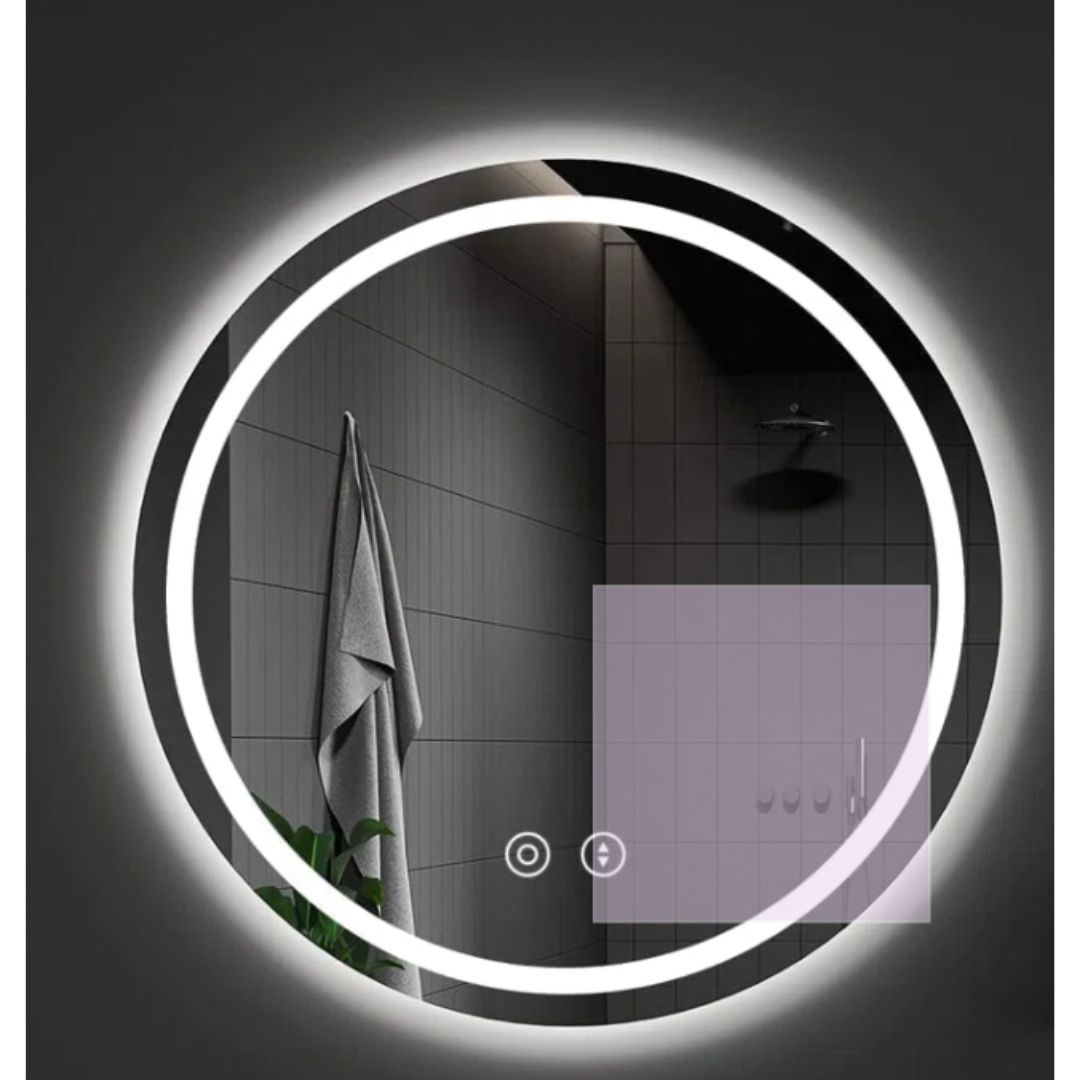How to Choose the Right Bathroom Mirror — These Are the Types, Styles, Considerations, and More You Need to Know
If you're looking for the perfect design for your space, then these expert tips are a must-read
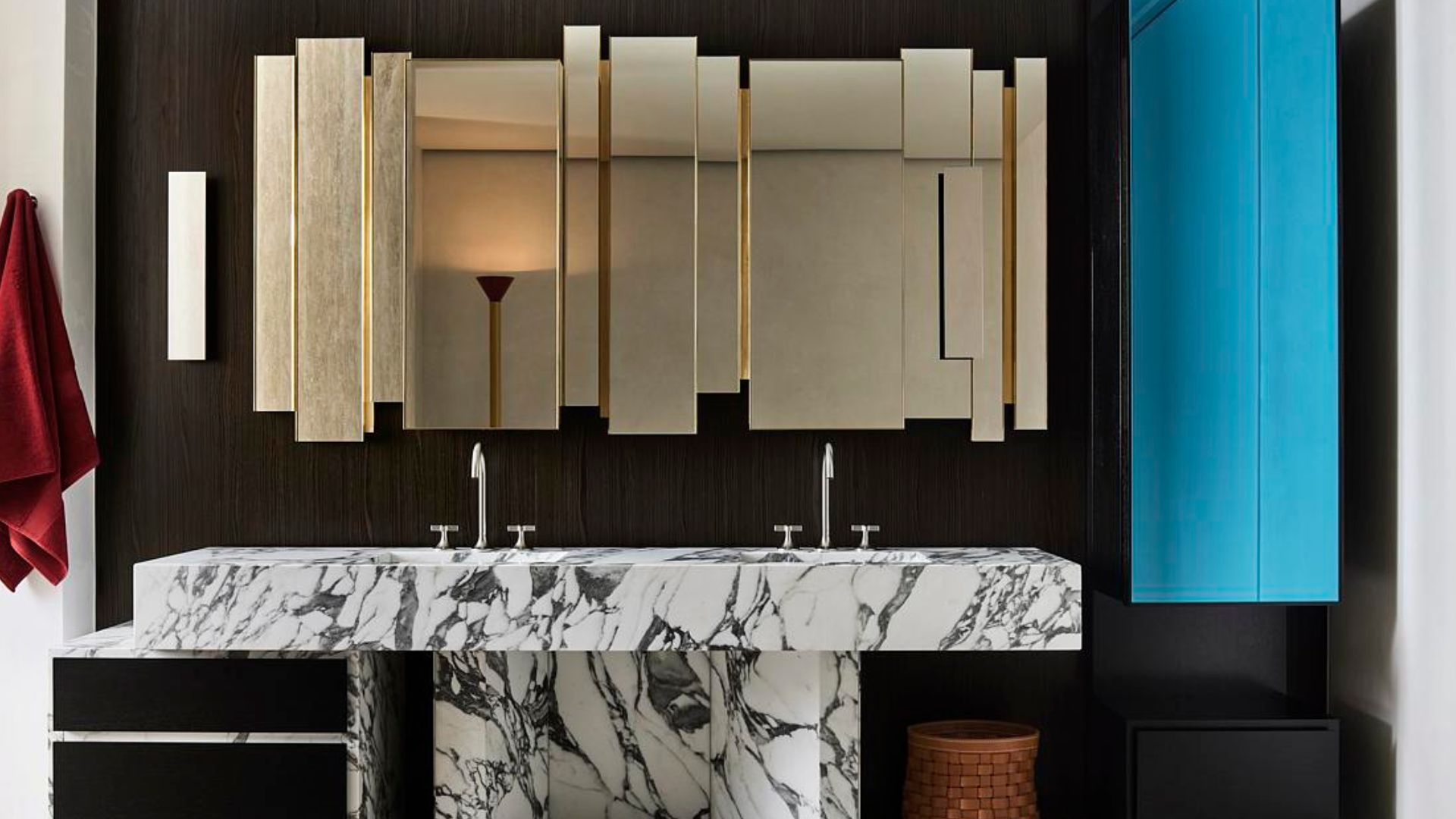

Choosing a good bathroom mirror design is like the perfect finishing touch for your space. They can be functional and simple yes, or they can be like the jewelry of the bathroom, bringing a decorative touch that adds personality to the space.
Before you start shopping, it’s a good idea to understand the basics of bathroom mirrors: the different formats and styles available, as well as the key considerations to keep in mind before buying. And of course, knowing the right retailers can make the process easier.
If all of this sounds overwhelming, don’t worry, our experts are here to help. Read on as top designers break down the rules for choosing the right bathroom mirror based on several important aspects like size, style, storage, and other features.
1. Size
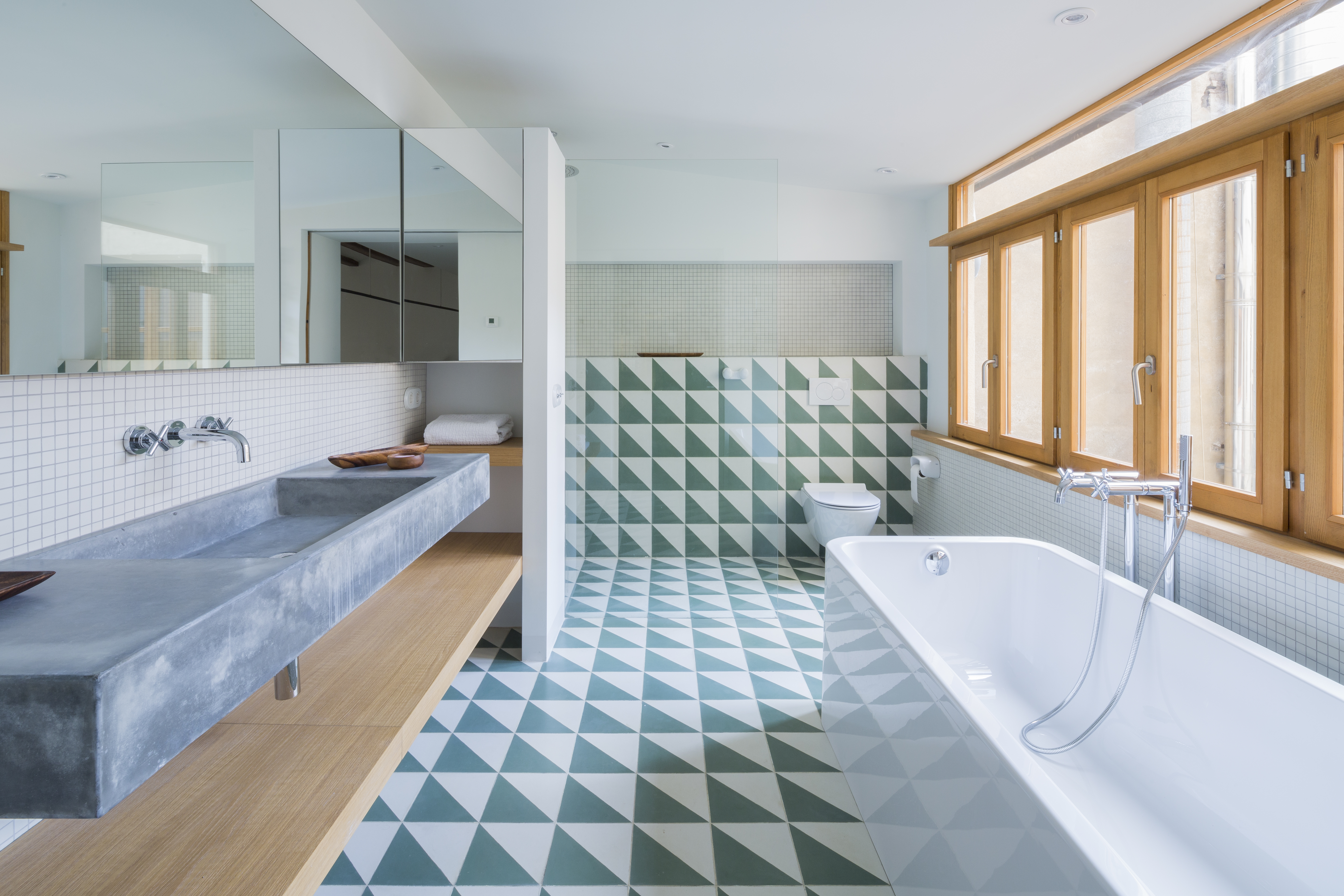
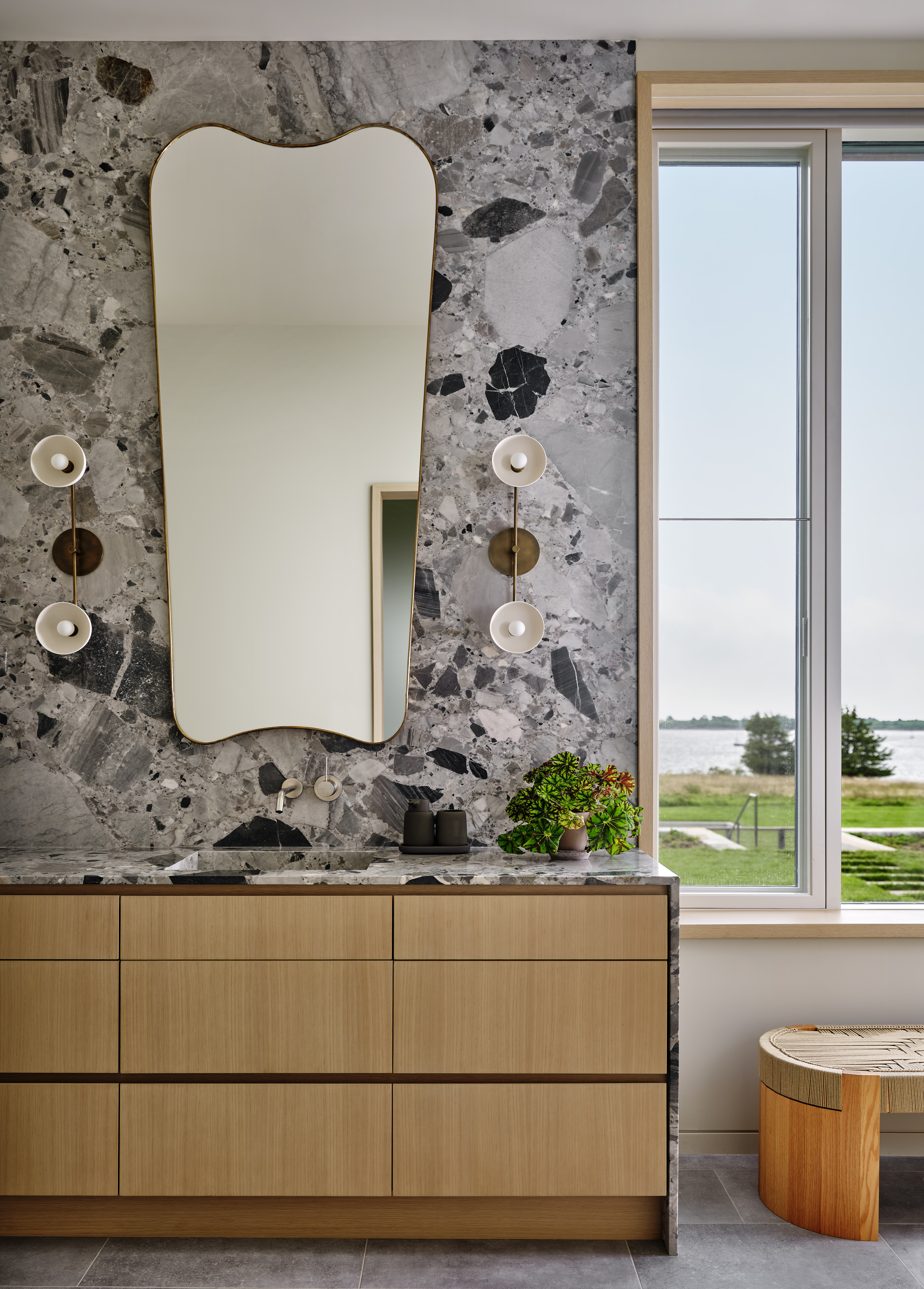
So, how big should a bathroom mirror should be? This can be confusing, as more often than not, many of us choose a mirror based on just its aesthetics or pure functionality rather than its true measurements. Usually, designers suggest measuring the vanity and then choosing a mirror that is just a few inches narrower than the vanity. But that doesn’t need to be a strict rule; it's just a good marker. In small bathrooms, for instance, you could go for very long, stretched-out mirrors that cover a wall and make the room look larger than it is.
Take this project, for instance, by Nook Architects. “The mirror’s shape connects with the proportions of the rest of the bathroom’s elements,” explain Joan G. Cortés, Rubén F. Berenguer, and Ana García, founders of Nook Architects. “The window, bathtub, and sink all feature elongated, horizontal proportions, and we wanted the mirror to echo them. This choice not only creates harmony but also helps enlarge and modernize the bathroom of a 1900s home.”
A big mirror trend is also double mirrors — say, two medium-sized ones that can balance a double vanity below. In powder rooms, which are usually more decorative, you could create a striking visual with multiple small mirrors that look dainty yet are functional. And finally, if you want a more cohesive, modern, and spacious look, one large mirror that spans the entire double vanity is a good option.
“We pulled a pair of vintage Gio Ponti mirrors that our client already owned out of storage for this project,” shares Poonam Khanna of The Union Works. “We sought the large scale so it would feel proportional to the conglomerate stone wall and expansive ocean views. Their placement almost feels like part of the ‘pattern’ of the stone, along with the Apparatus Trapeze sconces. The way the wall-mounted Dornbracht faucets tuck beneath them feels slightly whimsical. They add an organic, almost dynamic moment into the space.”
The Livingetc newsletters are your inside source for what’s shaping interiors now - and what’s next. Discover trend forecasts, smart style ideas, and curated shopping inspiration that brings design to life. Subscribe today and stay ahead of the curve.
With respect to height, a functional mirror need only reach about a foot above and below the eyeline of the people who’ll be using it.
When it comes to sourcing, there are plenty of options. For budget-friendly finds, try Wayfair, Etsy, or Amazon. For more polished, design-led pieces, consider Soho Home or Habitat.
Nook Architects has built its reputation on sensitive renovations of Barcelona’s period properties, using simple materials to create warm, welcoming homes that embrace comfort while avoiding unnecessary fuss

Poonam Khanna founded the UNIONWORKS with a desire to create soulful spaces in tune with her clients and their lifestyles. She does not adhere to one formula or style but approaches every project as a clean slate with endless possibilities. Her work span residential and hospitality interiors, including fashion showrooms, and upscale retail brands and offices.
2. Storage
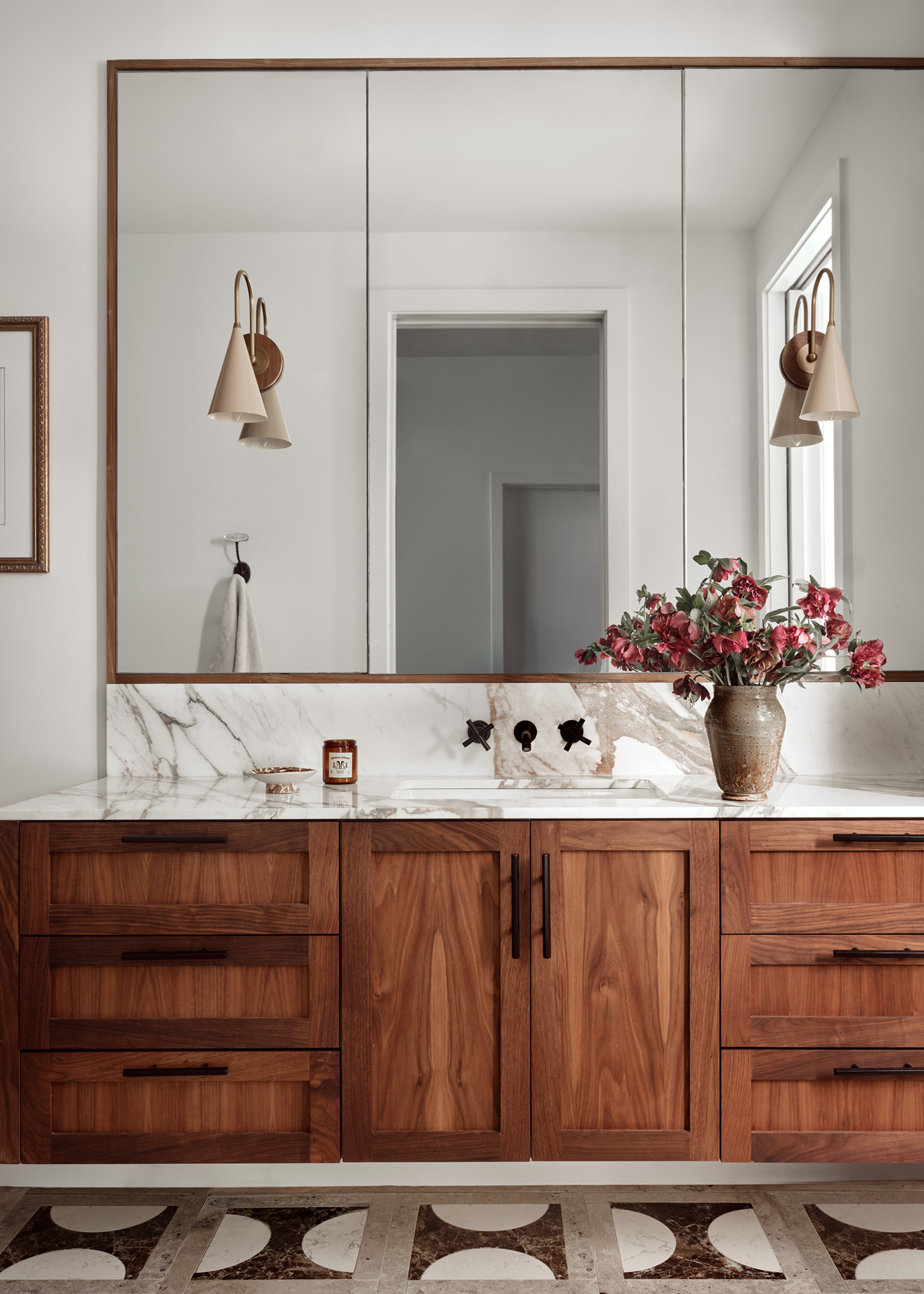
Storage hidden behind the mirror will create a clutter-free look in the bathroom.
A major contributor to small bathroom storage is the mirrored cabinet; that compact section cleverly hidden behind the mirror. Wall-mounted mirrored cabinets can be placed above the vanity to conceal all the paraphernalia — medicines, creams, pins, tiny toiletries, and more. What’s great is their versatility: they’re available in a range of widths, from sizes small enough for cloakrooms to wide designs that can stretch across a family bathroom wall.
Recessed mirrored cabinets are another smart option, as they tuck neatly into the wall, concealing most of their depth and creating a streamlined, almost seamless look. And if your bathroom layout is awkward, corner mirrored cabinets help you maximize available space while still providing ample storage.
3. Styles
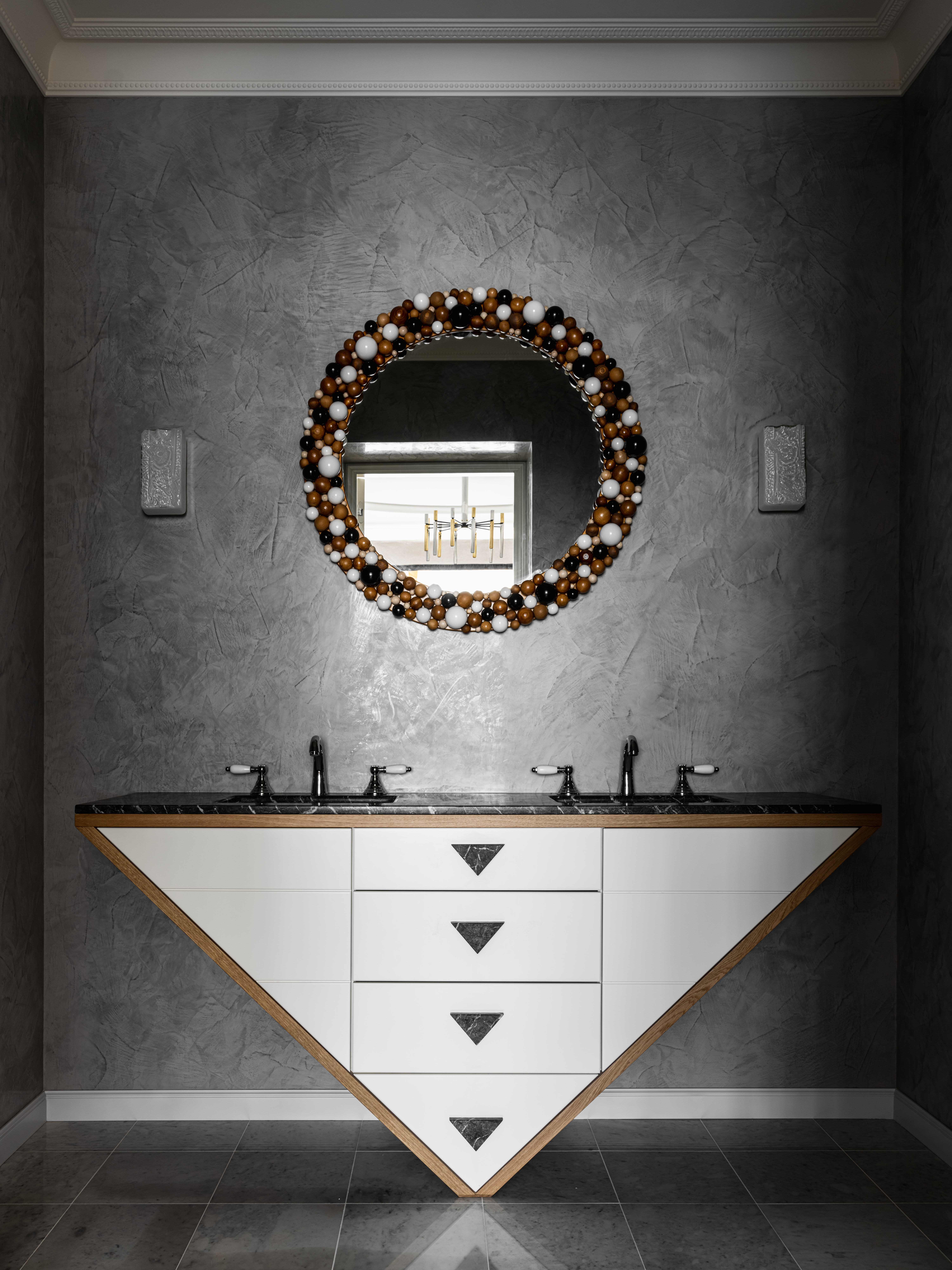
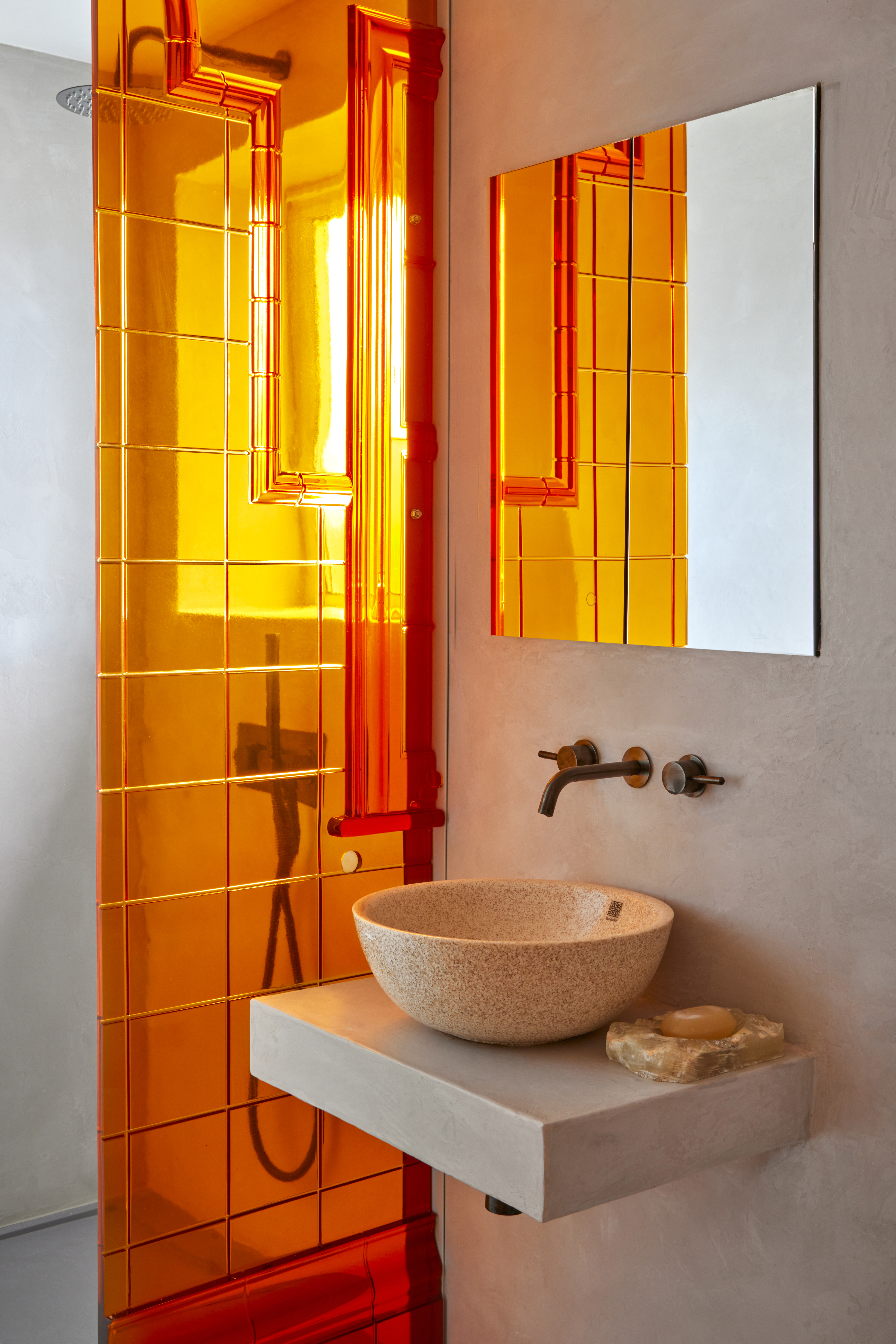
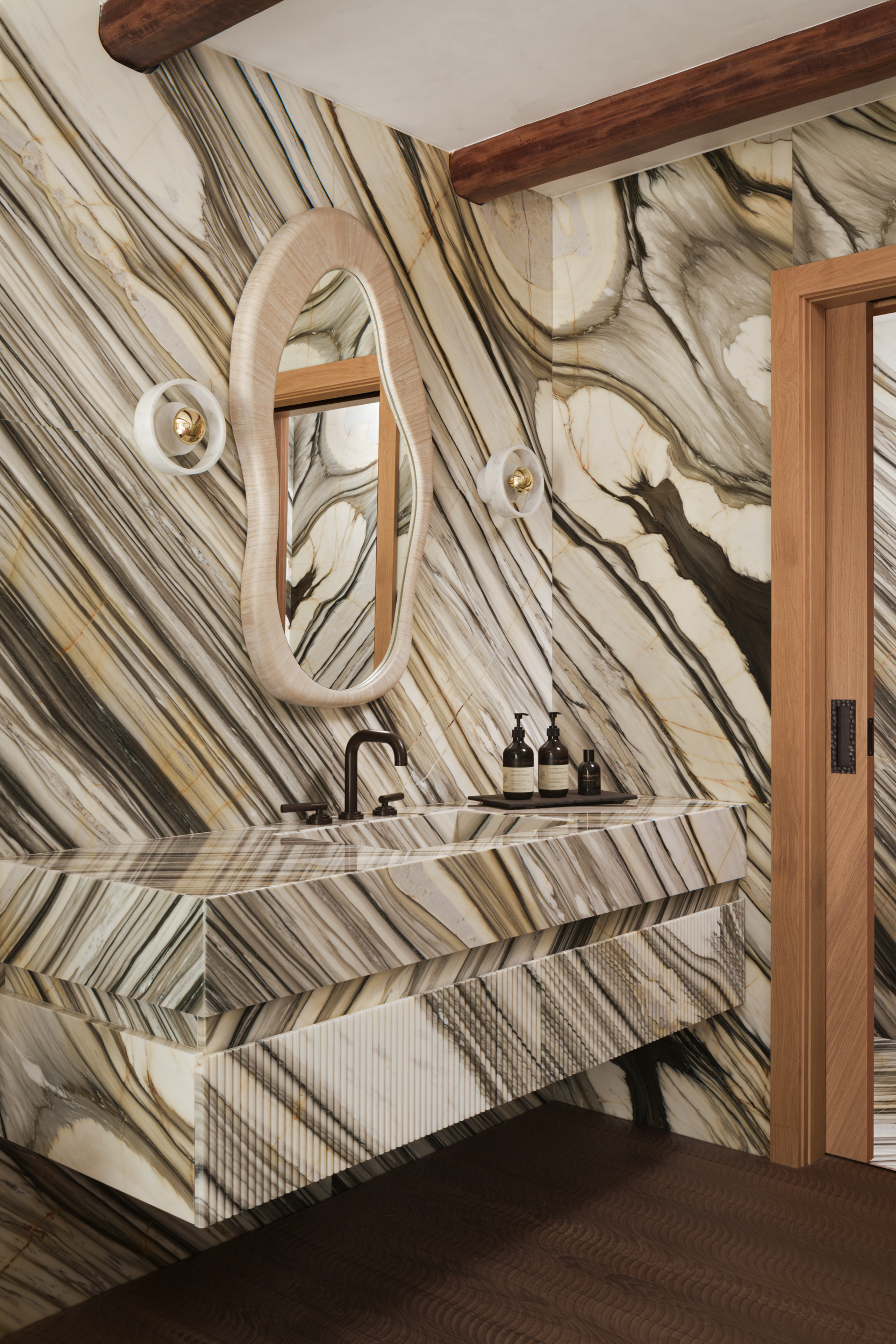
When it comes to mirror styles, the choices are galore. If you love all things vintage or want to give your bathroom a more transitional look, a vintage mirror might be the right choice for you. Interestingly, antique mirrors work beautifully in both period and modern homes. They’re a great pick if you want your mirror to serve as a design statement, whether in a master bathroom or a powder room. These are also available in several styles: Art Deco, Empire, Regency or Neoclassical. Several retailers offer designs, from John Lewis, Vinterior to 1stDibs, M&S and Zara Home. If you’re shopping online, be sure to purchase from a well-known, trusted source.
Abstract mirrors on the other hand, create an unconventional focal point, introducing depth and dimension into an otherwise ordinary space. However, it’s important to keep their artistic nature in mind. Smaller abstract mirrors are often more decorative than practical, offering style over clarity, so they may not be ideal for high-traffic or busy bathrooms.
For sourcing, look to modern and design-forward retailers such as Urban Outfitters and Oliver Bonas, or invest in high-end options from brands like Jonathan Adler.
These styles apart, of course, you could go in for the standard round, square, or rectangular mirrors. "Your mirror should sit comfortably within your bathroom layout, large enough to be functional and well-proportioned, but not so oversized that it overpowers the room,” advises Natalie Bird of Roca. “Round ones are especially effective in breaking up angular tile lines or sharp corners. Oval mirrors, meanwhile, create a striking statement and work especially well in height-challenged spaces, as they visually elongate the wall. Squares are a classic, versatile choice that feel bold and timeless, ideal for both traditional and contemporary bathrooms."
4. Lighting
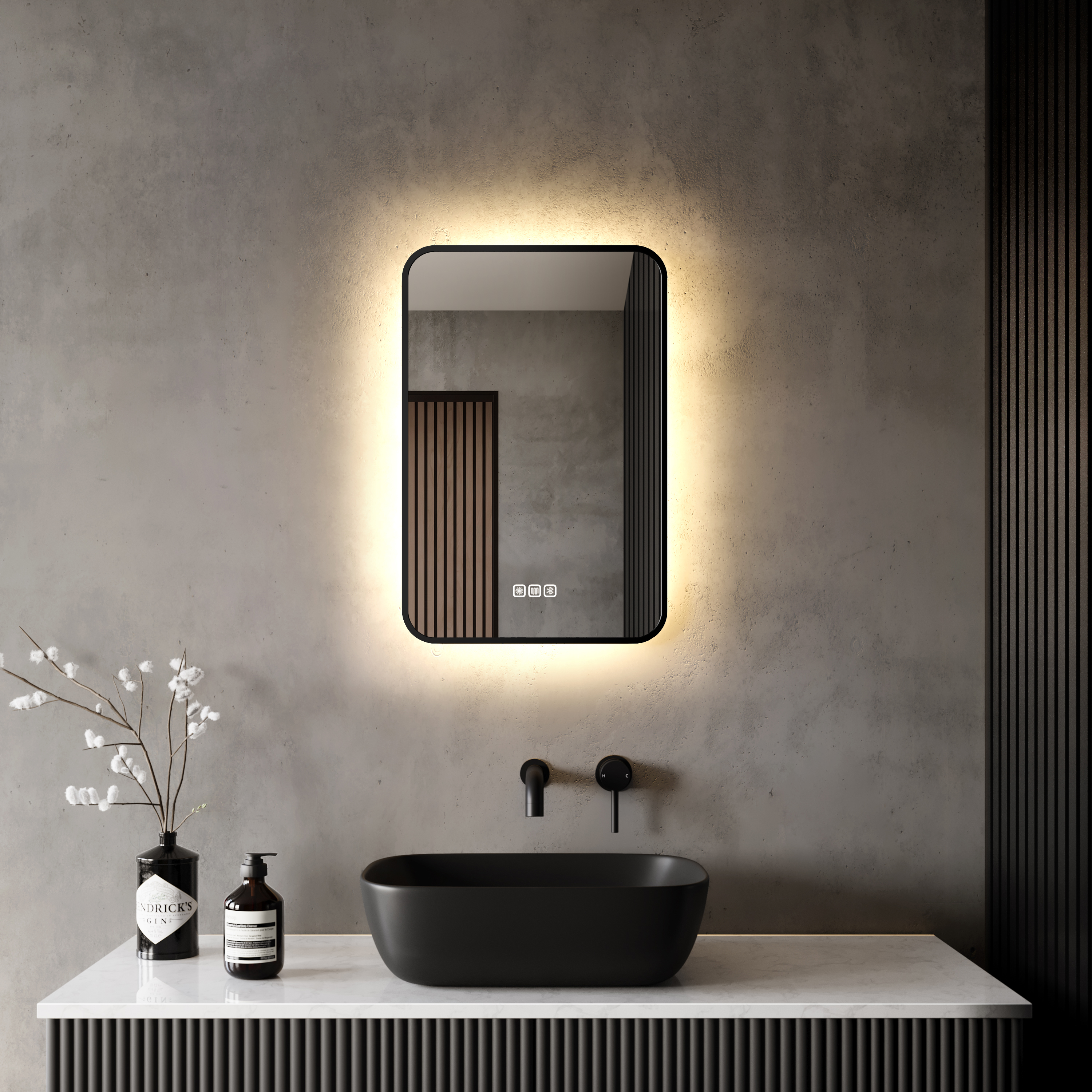
For a soft, and even illumination, choose a back-lit mirror.
There are several ways to light up a bathroom mirror. “Backlit mirrors come with integrated LED lighting that creates a soft, halo-like glow,” says Bird. “Not only does this eliminate shadows; it’s ideal for applying makeup or shaving. It also provides ambient lighting that’s perfect for a relaxing bath or for middle-of-the-night visits to the bathroom.”
Backlit designs deliver even illumination, particularly useful in larger bathrooms where certain corners can feel dim. They also enhance ambiance by creating a floating effect, reducing glare, and adding a sleek, modern touch. As a bonus, LED mirrors are energy-efficient.
Alternatively, non-backlit mirrors work beautifully when paired with thoughtful LED bathroom lighting. “Wall lights on either side of the mirror help reduce facial shadows,” Bird advises. “If you prefer overhead lighting, position it slightly in front of the mirror, rather than directly above, to avoid harsh shadows.”
For shopping, consider retailers such as Wayfair, Daals, and Wickes for a range of backlit mirror options.
5. Demisting
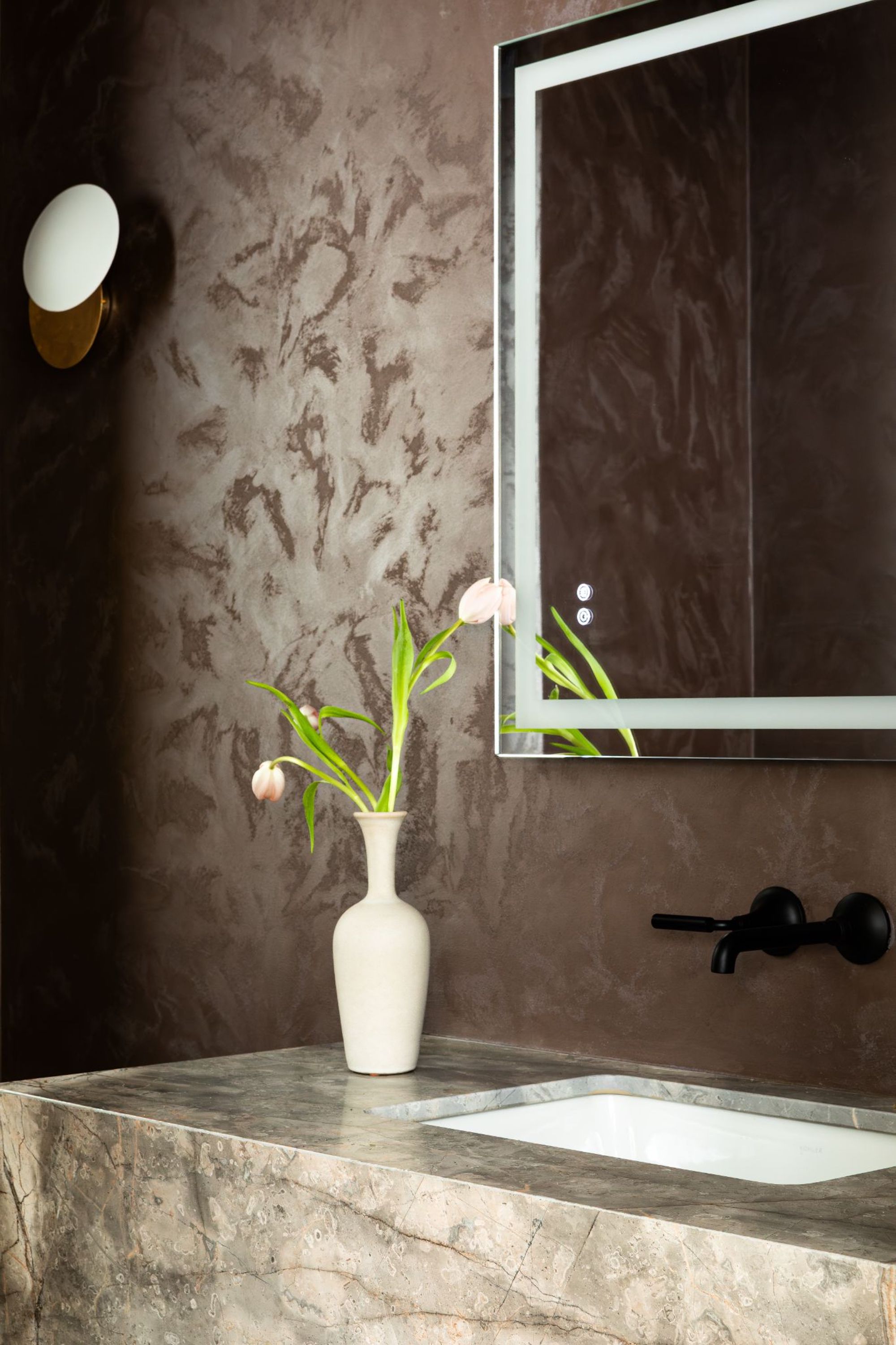
Mirrors with a built-in demister ensure a seamless bathroom experience.
A demisting bathroom mirror features a built-in heating system that prevents condensation and steam from forming, keeping the surface clear even after a hot shower or bath. These are also referred to as steam-free or anti-fog mirrors, and look great in any bathroom setting. They are available in a variety of shapes and sizes: round, oval, square, or rectangular, and look good in both metallic and frameless finishes.
These sleek designs are perfect for spa bathrooms or luxury suites, providing a clear reflection even after a hot shower or bath. They also help keep the space dry and mold-free by minimizing condensation.
Keep in mind that demisting mirrors use a heating element, which is an electrical component that must be powered by a permanent live wire, typically the bathroom’s lighting circuit. They generally consume about 20–50 watts of energy. Alternatively, you could opt for anti-fog coated mirrors, which feature a special surface treatment that prevents fogging when exposed to moisture.
6. Smart Features
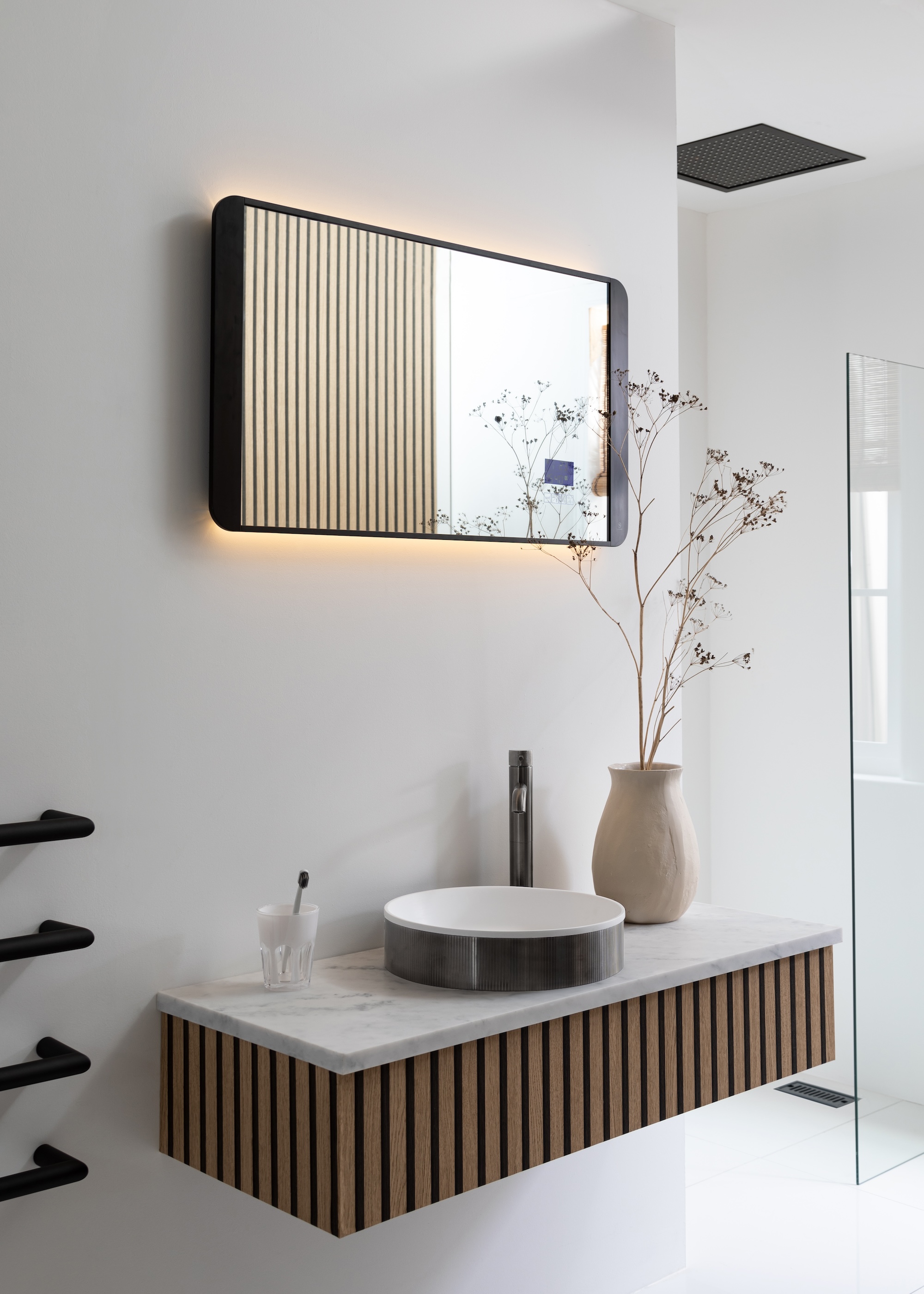
Create the most indulgent bathroom with a high-tech mirror.
There are several smart bathroom tech trends in 2025, and among them, bathroom mirrors are taking center stage. While integrated LED lighting and backlighting are already well known, today’s mirrors are also equipped with Bluetooth speakers, digital displays (think mirrors that show indoor temperature, weather updates, and even the time), and voice activation, allowing you to switch on the mirror light with simple voice commands. Some models even let you sync your phone to stream videos or upload reminders directly onto the mirror.
Another standout feature in smart mirrors is the memory function: these devices can retain your preferred lighting and feature settings, ensuring your bathroom is always ready exactly the way you like it. Of course, all these tech additions come with added costs, and smart mirrors are definitely on the higher end of the price range.
When choosing bathroom mirrors, balance function and style, and consider size, shape, lighting, and even smart tech features before you make a call. Also, ensure proportions suit your space, materials, and complement decor

Aditi Sharma Maheshwari started her career at The Address (The Times of India), a tabloid on interiors and art. She wrote profiles of Indian artists, designers, and architects, and covered inspiring houses and commercial properties. After four years, she moved to ELLE DECOR as a senior features writer, where she contributed to the magazine and website, and also worked alongside the events team on India Design ID — the brand’s 10-day, annual design show. She wrote across topics: from designer interviews, and house tours, to new product launches, shopping pages, and reviews. After three years, she was hired as the senior editor at Houzz. The website content focused on practical advice on decorating the home and making design feel more approachable. She created fresh series on budget buys, design hacks, and DIYs, all backed with expert advice. Equipped with sizable knowledge of the industry and with a good network, she moved to Architectural Digest (Conde Nast) as the digital editor. The publication's focus was on high-end design, and her content highlighted A-listers, starchitects, and high-concept products, all customized for an audience that loves and invests in luxury. After a two-year stint, she moved to the UK and was hired at Livingetc as a design editor. She now freelances for a variety of interiors publications.
